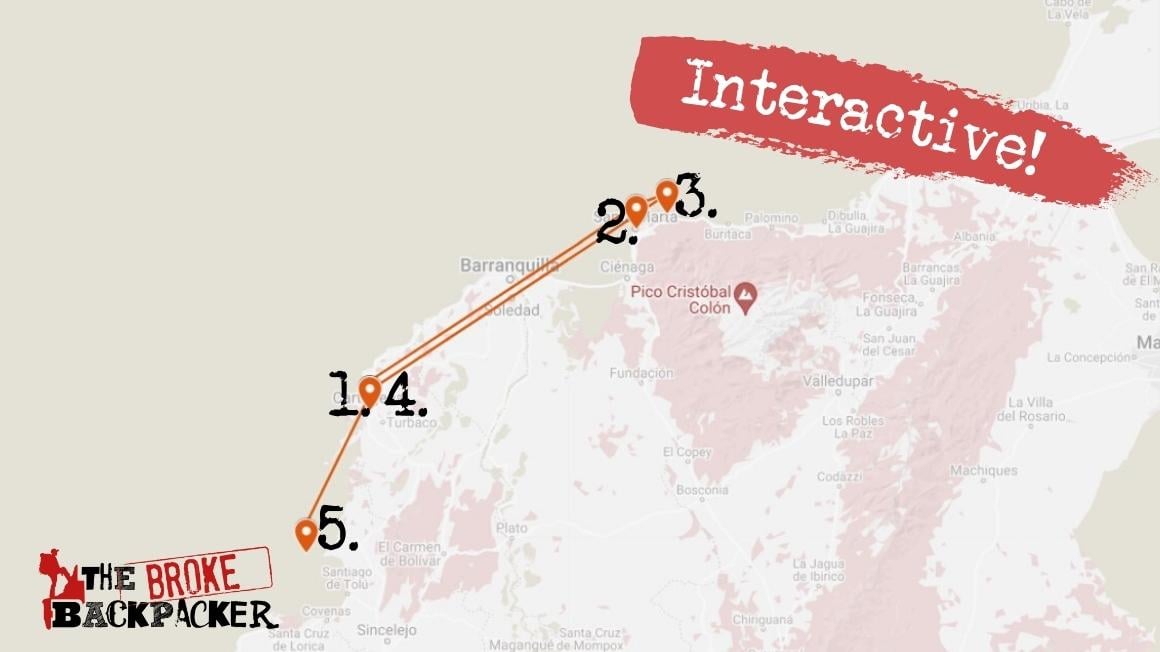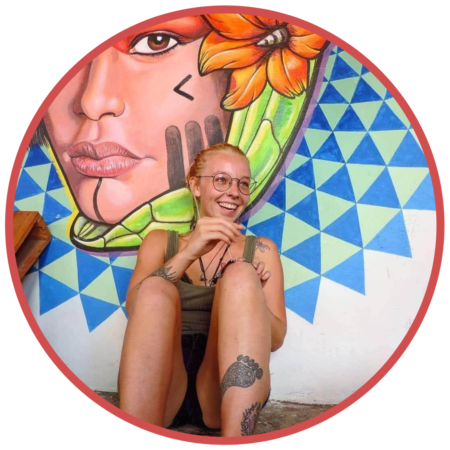The Broke Backpacker is supported by you. Clicking through our links may earn us a small affiliate commission, and that's what allows us to keep producing free content 🙂 Learn more.
So, you want to know how to travel South America, eh? Well, you’re in the right place!
Backpacking through South America is like learning to ride a bike without the training wheels. There is just the right amount of danger and curve balls to keep you alert, focused, and totally stoked on life.
With the exception of a handful of backpacker hotspots, South America is the wild west frontier of backpacking. This is the land of crazy parties, epic surfing, sprawling cities, and wild landscapes including the Andes and the Amazon jungle.
Above all else, South America is stunningly beautiful. Though challenging to navigate at times, it’s budget backpacker friendly, diverse, relatively safe, and one hell of a travel experience…
But South America is MASSIVE. Deciding where to go and how to travel South America is a mind-boggling task. That’s where I come in, amigos. This South America travel guide will provide you with EVERYTHING you need to know to prepare for your trip through South America.
Here’s the full low-down on how to backpack South America including routes, country profiles, tips and tricks for South America budget travel, and much more.f
Lace up your bootstraps and prepare to have your travel inspiration skyrocket. We’re going on an adventure!
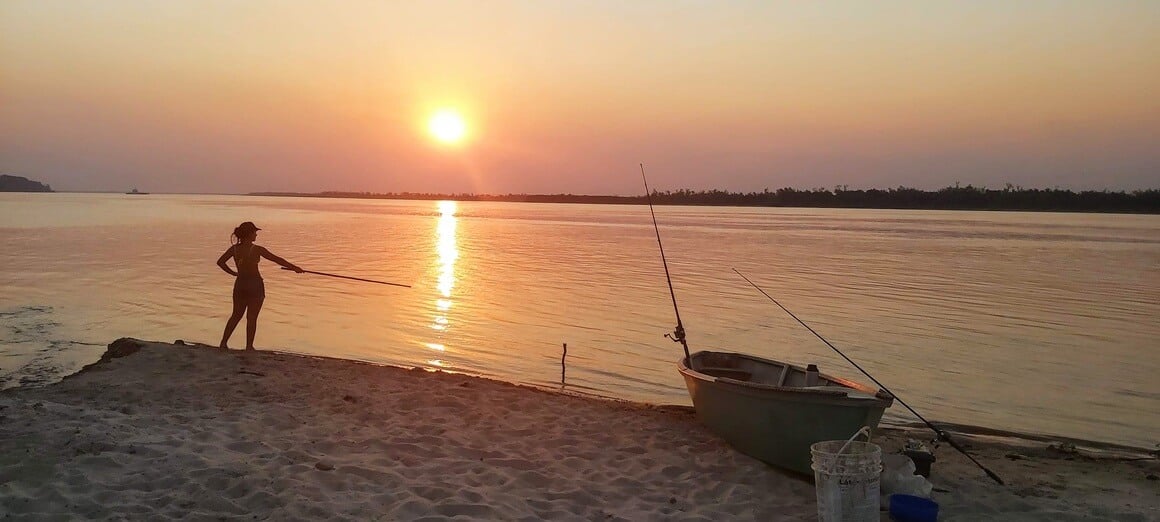
Photo: @Lauramcblonde
The Broke Backpacker is supported by you. Clicking through our links may earn us a small affiliate commission, and that's what allows us to keep producing free content 🙂 Learn more.
Why Go Backpacking in South America?
The South American continent is one of my favourite places on earth. It was always a place that mystified me: the traveller group was generally older and more mature. So when I got invited (by a sexy South American), I jumped at the chance.
It’s a place where I learned the art of budget travel, fell in love countless times, and had a multitude of life-changing experiences along the way. If you want to get off the beaten track whilst still having the option to meet plenty of other travellers, South America is the place to level up your backpacking skills and head on a real adventure…
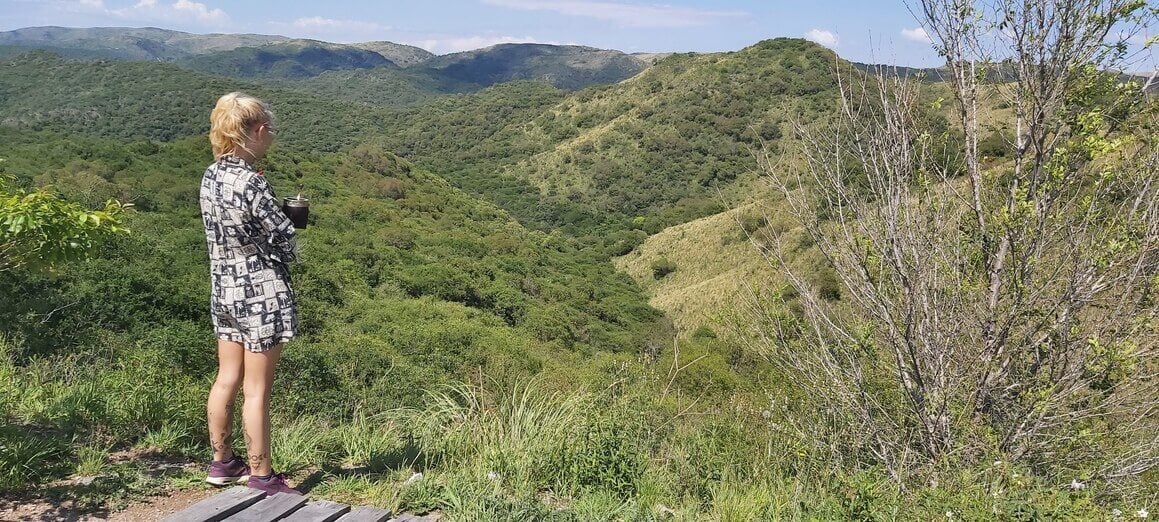
Photo: @Lauramcblonde
South America is one of the most diverse continents on earth. It is home to the world’s second-highest mountain range in the Andes, world-class surf beaches, the Amazon Basin, the world’s driest desert, huge plains of lush grassland, glaciers, and unique wildlife not found anywhere else on Earth…
Each country you visit whilst backpacking South America offers up the opportunity to experience the incredible natural and cultural forces unique to that region.
Backpacking South America is generally a cheap endeavour – although it’s not as cheap as Southeast Asia or India. There are some fairly expensive corners of South America that you should avoid if you’re travelling on a budget.
You will fall in love with South America (and maybe a person or two along the way). So let’s dive into some South America travel itineraries and backpacking routes for your trip.
- Best Travel Itineraries for Backpacking South America
- Join our entrepreneurship retreat in Bali!
- Best Places to Visit in South America – Country Breakdowns
- Best Tours in South America
- 9 Top Things To Do in South America
- Backpacker Accommodation in South America
- South America Backpacking Costs
- And Speaking of Plastic… Get an eSIM For South America
- Best Time to Travel to South America
- Staying Safe in South America
- Getting Into South America
- How to Get Around South America
- Working in South America
- What to Eat in South America
- South American Culture
- Unique Experiences in South America
- FAQs About Backpacking in South America
- Final Thoughts on Backpacking South America
- Buy Us a Coffee!
Best Travel Itineraries for Backpacking South America
When making a South America backpacking itinerary, remember that travel distances are HUGE, internal flights expensive, and sometimes you want to stay somewhere longer than anticipated.
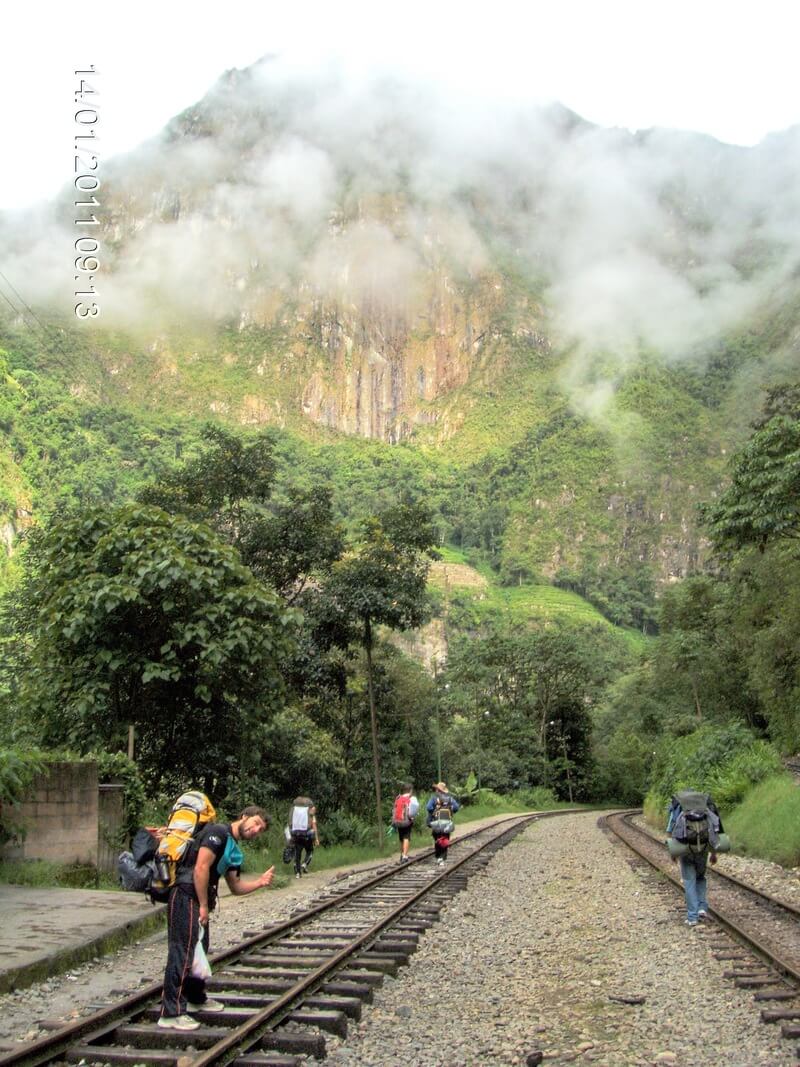
Photo: @Lauramcblonde
So choose your South America backpacking route carefully. Unlike other continents, how much time you have really matters; you simply can’t do all of it.
If you only have 2 or 3 weeks for travelling South America, forget about seeing the whole continent. I recommend sticking to one country and devoting your energy to exploring it properly.
In one month, you could explore some countries closer to each other. You could visit Bolivia and Lake Titicaca in Peru for example. It’s good to have room for spontaneity in your South America travel itinerary too.
2 Week South America Travel Itinerary – The West Coast Appetizer
You’ll have to keep moving to make this itinerary happen in 2 weeks, but I believe in you!
Start your backpacking South America itinerary in Colombia by visiting Cartagena. After a few days, head to Santa Marta, the jump-off point for Minca – a charming mountain town – and Tayrona National Park. Plus, there are so many good places to stay in Santa Marta too.
Get a bit off the beaten path, and head east to Cabo de la Vela (where the desert meets the sea) and Punta Galinas, where you can feast on fresh seafood along the Caribbean coast. Doubling back to Cartagena, head to nearby Playa Blanca and Tolú (mangrove) before heading to Islas de San Bernardo (white-sanded islands).
Or you could start in Lima, Peru. Explore the city for a day or two before heading to the Nazca Lines, Arequipa, and Colca Canyon.
Then head to Cusco in the Andes. Take a few days to get used to the altitude before setting off on a multi-day trek to Macchu Picchu.
Alternatively, start in Buenos Aires. Then you can head south to trek in Patagonia. In southern Argentina and Chile, you can do the world-famous Torres del Paine circuit. 2 weeks is cutting it fine but – if you hustle – you could pull it off.
In 2 weeks, you can get a good taste of Colombia, Ecuador, or Bolivia. Don’t miss out on the Salt Flats.
1 Month South America Travel Itinerary – The Starter

With 1 month, you can make an epic backpacking South America itinerary. If you want to explore more than one country in South America, you’re gonna need more than 3 weeks.
For surf bums, you could easily spend a month heading beach to beach from Southern Peru all the way to Colombia, in 1 month. Or you could do 2 weeks in Argentina followed by 2 weeks of hiking in Chilean Patagonia.
If it were me, larger countries like Argentina, Chile, and Brazil are better to explore with more than 1 month. You can do it but you will spend a long time on bus journeys, so I would just stick to one area.
Southeast Brazil is a good choice for 1 month on a South America itinerary: travel from Rio de Janeiro all the way south to Florianópolis and hit up everything in between. Bear in mind that you’ll probably want to stay in Rio AND Floripa longer than you expect.
Highlights of this route include exploring the megapolis of São Paulo, idyllic getaways of Ilha Grande and Paraty, eco-friendly and laidback Curitiba, and the crazy nightclubs of Balneário Camboriú.
Or, you could fly into Ecuador and spend 3 weeks exploring here: stay at a great hostel in Guayaquil before heading to Montañita. In Montañita you can party and surf to your heart’s content. Head North towards Bahia de Caraquez and Canoa for surf towns that are more off the beaten path.
Next head to the mountains, stopping first in Quito. There are some excellent treks in the Ecuadorian Andes.
If you have time, definitely hit up the Volcano Loop trail on the outskirts of Cotopaxi National Park. A trip to the jungle around Puyo is recommended as well. Then head for a week of trekking in Colombia.
3 Month South America Travel Itinerary – The Great South America Main Course
3 months backpacking South America, eh? Hell yes!
I recommend flying into Lima, Peru unless you know you want to start in the north (Brazil or Colombia) or further south (Argentina or Chile). Explore Lima and the coast before heading to the Andes. There Machu Picchu awaits in all of its glory.
Definitely do a trek to the famous Inca city! (More on hiking in South America later). From here, you can either drop down on the other side of the Andes and explore the Amazon basin or you can head south to Bolivia and eventually Argentina and Patagonia.
Alternatively, you can slowly start making your way north via the Coast. You could spend a month (or more) in Ecuador, Colombia, or Brazil respectively.
Personally, I started off in Buenos Aires then went north to Brazil and Colombia. The distances were truly massive. I’m talking 30-hour bus rides (on comfortable buses I must say).
Travelling in South America is never a quick affair, so plan your itinerary accordingly.
6 Month South America Travel Itinerary – The Full 3-Course Latin America

Life has brought you to the fortunate crossroads of having 6 months to travel South America? Good on you!
With a 6-month backpacking South America itinerary, you have the luxury of really being able to take your damn time. To see multiple countries, it’s a practical choice to begin your journey either in the north or the south to avoid backtracking.
With a 6 month itinerary, you can explore many South American countries in depth. I’ll be honest with you, the itinerary shown on the map is really fucking ambitious. But hopefully, it gives you an idea of what crossing this vast continent would look like.
Starting your journey in Rio de Janerio or São Paulo might be a bit of a rough landing, though you will be a primed bad-ass by the time it comes to move on to another country. Other options are starting with some days in Buenos Aires, in Argentina, and Chile, in the south.
You could be surfing it up on the coast of Ecuador one day, and be in the mountains of Peru several days (and many bus rides) later. I advise taking a chunk of your time to really explore and get off the beaten path in top destinations like Brazil, Colombia, and Bolivia.
Having 6 months or more to go backpacking truly means you have a total blank slate to work with. So get ready to write your own beautiful backpacking destiny!
Join our entrepreneurship retreat in Bali!

Ahoy friends, Will here! Introducing a very special project that involves YOU – An 8-day immersive experience in Bali, where I have been living for 7 years now.
If you’re passionate about freedom and designing your dream life, this is your chance to join like-minded folk on the same path and learn from my own wins, losses and lessons over my fifteen years of entrepreneurship, whilst soaking in the best of beautiful Bali.
Expect daily workshops, recharge practices, intention setting and fire ceremonies and perhaps a cheeky game of pool against myself, the one and only undefeated pool legend. All while experiencing the island’s best-kept secrets ?
Best Places to Visit in South America – Country Breakdowns
Each country in South America has something unique and profoundly exciting for backpackers. But they also have some common themes: they are Spanish speaking (minus Portuguese in Brazil), they have stunning natural beauty, and some of the nicest people you will meet whilst travelling. So finding the best places to backpack in South America has a lot to do with your own interests.

Photo: @Lauramcblonde
Maybe you’ll explore the epic snow-capped peaks of Patagonia in Argentina and Chile. Party with beautiful people at the Carnival in Brazil.
Trek to the Lost City in Colombia. Experience the sun-drenched deserts of Bolivia and the colourful Rainbow Mountains of Peru.
Backpacking through South America truly is a life-changing journey through one of the planet’s most fascinating landmasses. When you visit South America, you can be sure that it will be some of the most fun you will have in your life.

Photo: @Lauramcblonde
South America is a vast continent on the move. The number of people travelling to South America is increasing every year. Whilst the cost of living in South America remains quite low, each country requires a different budget for travellers.
Once you begin to discover a few of the South American countries, you will be entranced by the jaw-dropping landscapes, fascinating history, vibrant culture, and awesome food.
Let’s take a look at the countries that make backpacking in South America so damn special.
Backpacking Brazil
Brazil is, hands down, one of South America’s most dynamic countries. It’s all about the extremes. Whether it’s the parties, the people, or nature, the vibrations run through everything – and connect everyone.
Backpacking in Brazil offers up sick surf beaches, fun-loving locals, insane parties, and landscapes that would make even the most seasoned traveller say “no shit, mate, look at that!”
Of course, the Brazilian festival Carnival is legendary – and for good reason. Get your mind blown on the Brazilian side of Iguaçu Falls, visit the Amazon, drink a Caipirinha on the beach! Plus Brazil’s home to big up-and-coming cities like Belo Horizonte, Curitiba, and Natale.

Photo: @sebagvivas
And when I say ‘extreme’, I mean extreme: Brazil is absolutely MASSIVE and covers nearly half (47%) of South America’s landmass! That should give you an idea of how big it is.
But, more importantly, it gives you a better idea of how much diversity Brazil has on offer. In fact, there’s a lot going for Brazil that you may not be aware of.
For example, trekking probably isn’t the first thing that pops into your mind when you think about backpacking through Brazil. It’s a shame because Brazil has truly gorgeous trails spread throughout the country. It’s also home to Iguazu, one of the most incredible waterfalls on Earth.
The best hiking opportunities are usually found in Brazil’s national parks (parques nacionais). Brazil has over 70 national parks and – in terms of beauty – these can contend with any other on Earth.
What to Know Before Visiting Brazil
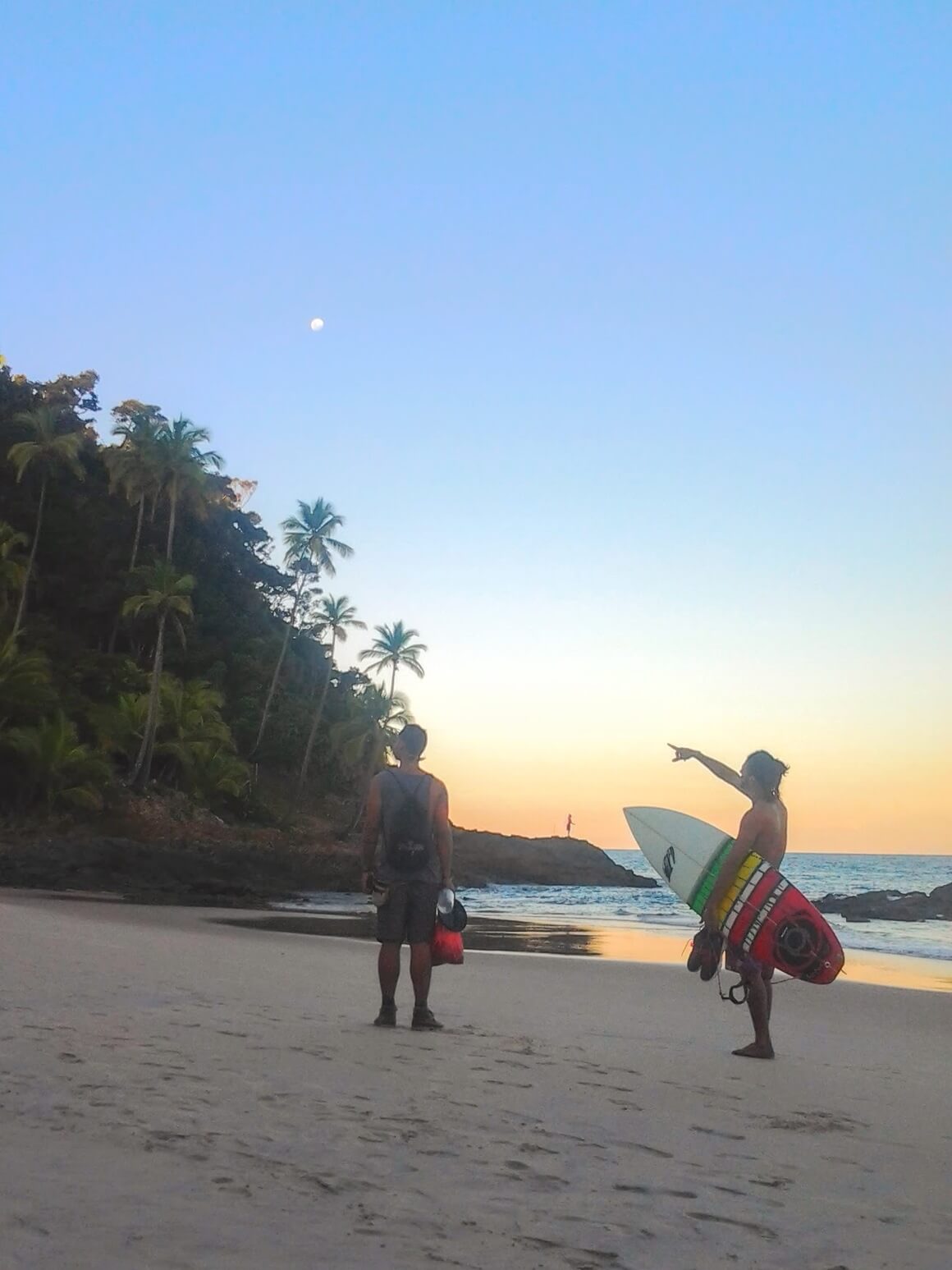
Photo: @sebagvivas
- Don’t miss out on… Florianopolis. The Brazilians favourite place to visit for a reason. It’s chilled, safe, and gorgeous. You plan to stay in Floripa for a week, it grabs you by the balls, and you get stuck for months.
- Keep an eye out for… Travel distances. Don’t be fooled: they’re way longer than they seem on the map. Give yourself plenty of time to get from A to B.
- The coolest hostel is… Hostel do Morro. In one of my favourite destinations in Brazil, this hostel is a true nature immersion. In the “mato”, with sea view and monkeys visiting. A true good vibes place!
- The best food is found in… Belo Horizonte. There is an amazing energy to this place; everyone hangs out on the streets, eating and drinking at plastic tables, all night long.
Backpacking Colombia
Whilst South America has many countries that I consider to have the full package, Colombia is the most complete. It’s a relatively small country. So considering the scale of epic surf, neverending parties, untouched jungle, happening cities, and towering mountains, Colombia is a reason for backpackers to keep travelling!
Cali, Cartagena, Bogotá, and Medellín are a few major cities to visit in Colombia where you can really let loose. Go and have some extraordinary conversations with the locals about life in Latin America and not taking life too seriously.

Photo: @Lauramcblonde
Is Colombia safe? Perhaps your mum would love to know. Hell yes, it is!
As much as Colombianos are ready for the disassociation with Pablo Escobar, it’s hard not to mention the impact that he made on the country and the South American continent as a whole. But his reign of terror is over.
Modern-day Colombia couldn’t be more different from the days when narco-traffickers ruled the country. Visiting Medellín now vs 20 years ago is a COMPLETELY different experience. The Medellín of today is a great experience.
Colombia is for adventure junkies and nature lovers too. The northern terminus of the Andes Mountains ends here and you can take your treks into the deep jungle in Colombia’s National Parks.
What to Know Before Visiting Colombia

Photo: @Lauramcblonde
- Don’t miss out on… Carnival in Barranquilla. Most of the time, this industrial town is overlooked by travellers. But for one week of the year, this place goes NUTS.
- Keep an eye out for… how difficult the trek to Cuidad Perdida is. It’s long, treacherous, and hot as shit, but absolutely worth the effort in the end. The Lost City is one of the best places to visit in South America.
- The coolest hostel is…Viajero Santa Marta Hostel. Great location and has lazy and peaceful vibes. Amazing rooftop and activities to connect and meet other travelers.
- The best food is found in… the local restaurants. Look for the menu del dia to feel like you’ll never need to eat again.
Best Tours in South America
These are my top picks for the best organised tours that you can take to explore South America:
- Inca Trail Express, Cusco – 7 Days
- Colombia Express, Bogotá to Cartagena – 9 Days
- Buenos Aires to Rio de Janeiro – 17 Days
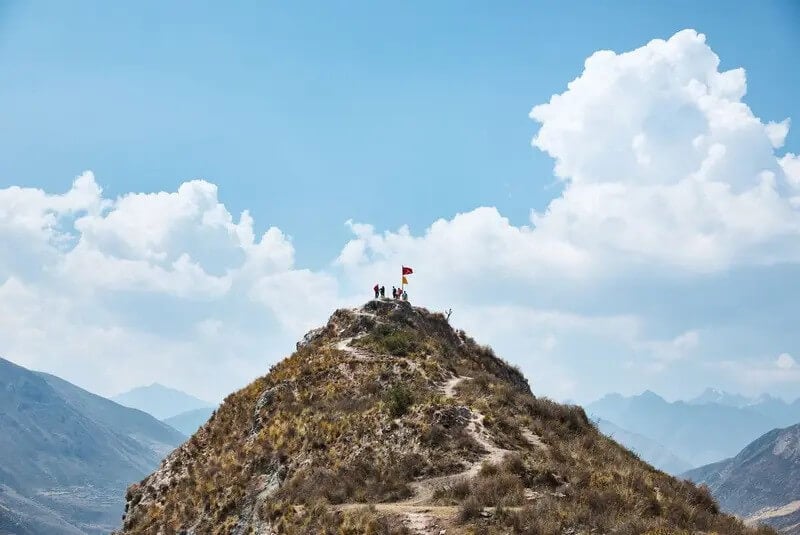
Backpacking Ecuador
Ecuador might be small but it certainly packs a punch. I spent 3 months backpacking in Ecuador and could easily spend many more.
The diversity is incredible and it’s a great place to experience Andean Highland culture. The people who live in the Andes have a distinct and ancient culture rooted in mountain life. They even speak another language called Quechua. It’s a relatively safe country, and isn’t ruined by mass tourism.
In addition to staying in colonial cities like Quito, Ecuador’s natural landscape is the biggest draw. You can spend weeks or months exploring the coast before heading to the mountains and vice versa. Towering over the shore, volcanoes, waterfalls, and massive snow-capped mountains all make incredible trekking routes. Wherever you go, there are heaps of great hostels in Ecuador too, perfect for meeting other backpackers.
Surfing reigns supreme on the Ecuadorian coast. It attracts surfers from all over the globe. Even if you’re a beginner, it’s a great place to catch your first waves. Towns like Montañita and Canoa are famous surf beaches and party hotspots.
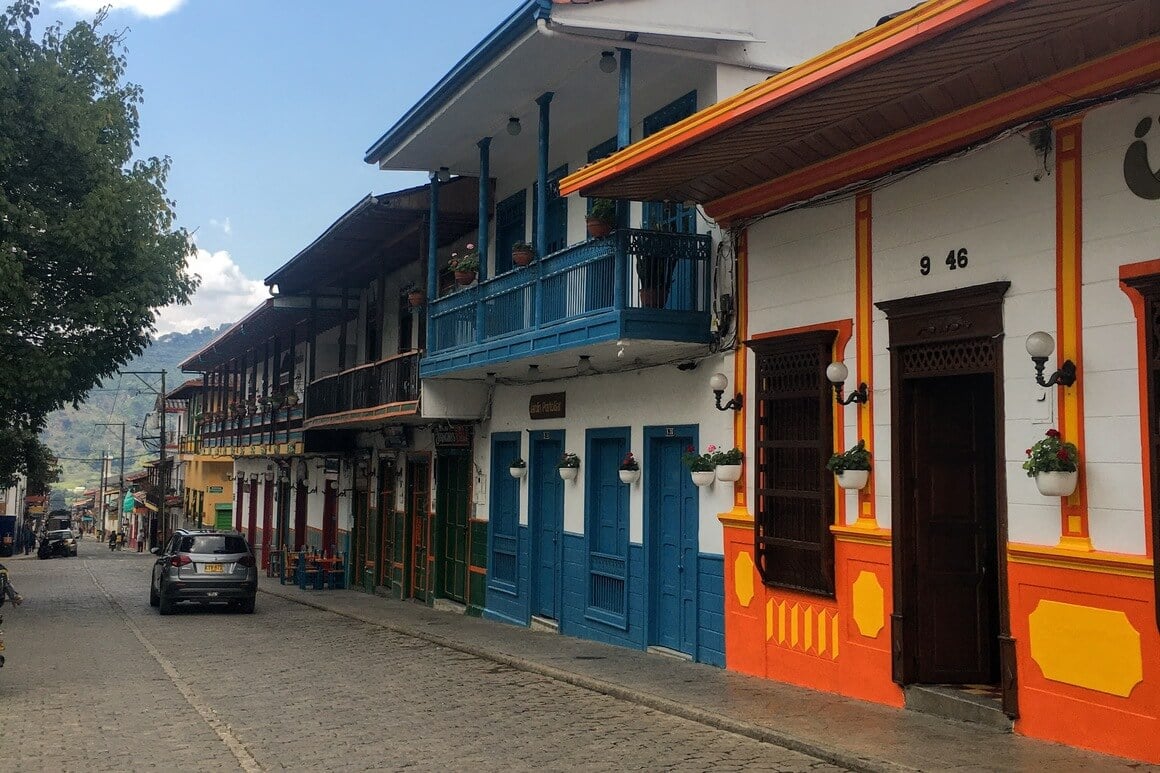
Photo: @Lauramcblonde
If you have some extra cash in your budget, you can visit The Galápagos Islands. But be warned – this is not a cheap endeavour, especially for excursions like diving (though it is AWESOME). So prepare yourself to shell out some cash!
Then there is the Amazon Basin of Ecuador. The Amazon region is what helps make Ecuador one of the most biologically diverse places on earth. The Amazon is best explored by boat with a local guide and is bound to be the adventure of a lifetime!
What to Know Before Visiting Ecuador
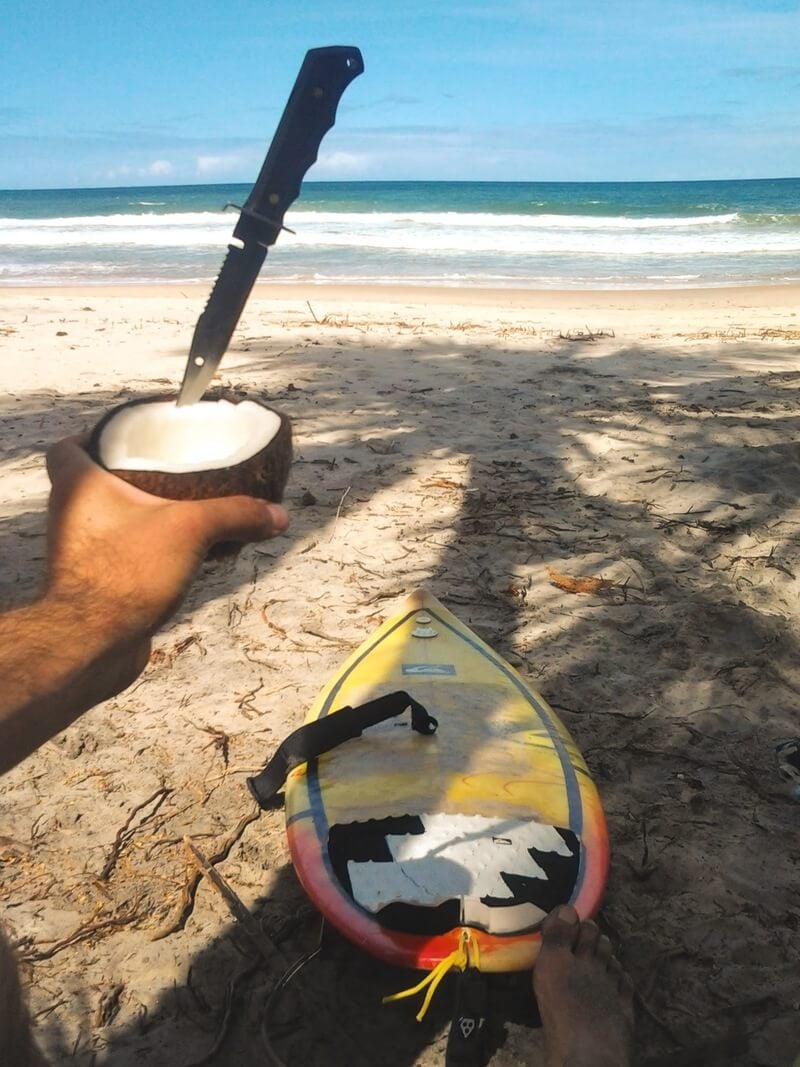
Photo: @Lauramcblonde
- Don’t miss out on… exploring the highlands and Cotopaxi National Park. Easily accessed from Quito and totally epic.
- You know what’s overrated… Montañita. It’s not all it use to be and is mostly catered to foreigners who want to get wasted and high. If you want real Ecuadorian culture, there are better places nearby.
- The coolest hostel is… Casa del Sol. Relaxed vibe at a few steps from the beach. Close enough to go party and far enough to have a good sleep. THE place for yoga and Surf.
- The best food is found in… the small almuerzo (lunch) cafes found across the country.
Backpacking Peru
Ah Peru. Backpacking Peru is the essence of travelling in South America. Though tourism has spiked in Peru in recent years, there is still plenty of magic to be found here.
The cost of backpacking Peru is a little higher than you might expect. Expect to pay between $30-40 USD a day whilst travelling here. (But more about the cost of backpacking South America later.)
Peru has a super long coastline dotted with prime surf beaches and scuba diving sites. In the Andes lies a whole other form of beauty.
I mean, who isn’t aware of Machu Picchu and hiking the Inca Trail? Besides the obvious, there is much, much more to the Peruvian Andes than Machu Picchu. Although, you still have to go there!
Peru has some truly fascinating colonial cities as well, including Cuenca and Cuzco, which is the gateway city to Machu Picchu. The off-the-beaten-path potential in Peru is enormous.

Photo: @amandaadraper
Check out the Rainbow Mountains to see nature at its most colourful. Hike the majestic Cordillera Huayhuash. Explore Colca Canyon and sleep out under a billion stars. Chill out in laid-back Trujillo.
If you want a truly magical experience, there are many eco-lodges in Peru that are nestled in the best nature spots, from the Amazon jungle to the Andes mountain range.
Wherever you decide to travel in Peru, be sure that it will be a highlight of your South America backpacking adventure.
What to Know Before Visiting Peru
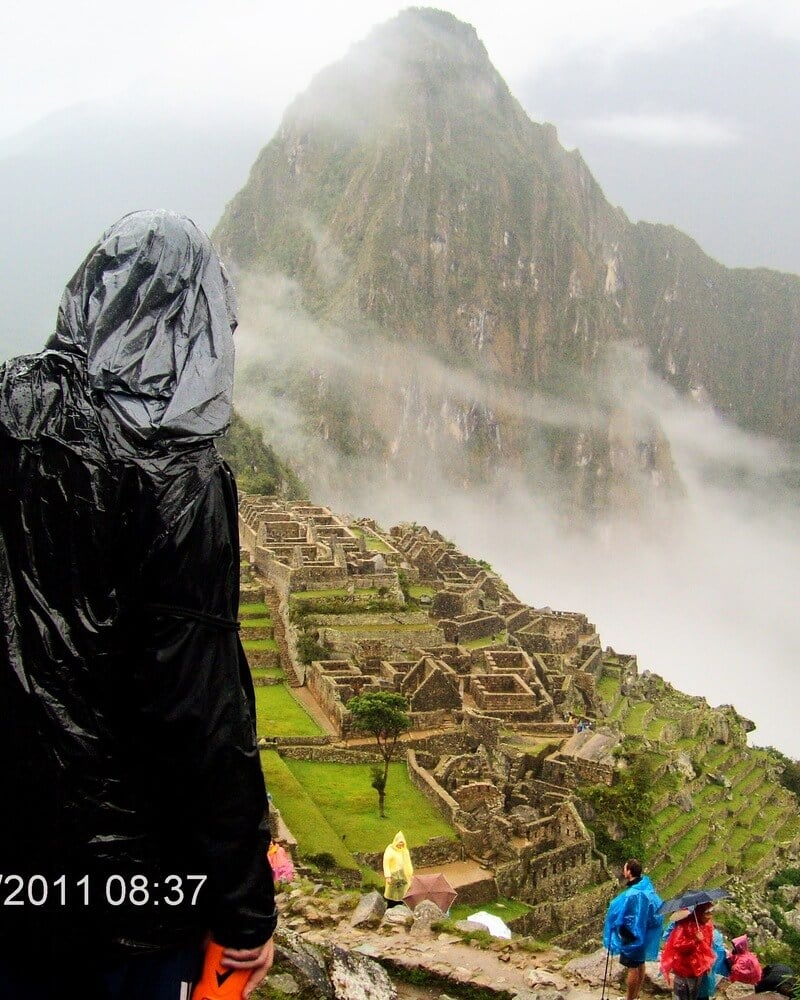
Photo: @Lauramcblonde
- Don’t miss out on… a motorcycle journey through the Sacred Valley outside Cuzco. It’s definitely worth staying in Cuzco a little longer for this.
- You know what’s overrated… the Inca Trail. Go for the less-trod Salkantay Trek to Machu Picchu instead.
- The coolest hostel is… Banana’s Adventure Hostel. In an unreal location (an oasis in a desert) this is a sociable and relaxed vibes hostel. With a great rooftop plus a lovely garden with hammocks, and an outdoor pool.
- The best food is found in… Lima. This city is full of cafes, local lunch spots, and street food vendors. The best are in Barranco and Miraflores. Pig out on ceviche!
Backpacking Bolivia
Backpacking in Bolivia offers up a glimpse of what South America was like 30 years ago. It’s a country looking to the future in many ways whilst still having one foot firmly rooted in the tradition of the past.
Expect super friendly locals, dramatic desert and mountain landscapes, and the kind of low prices which make the dirtbag within us very happy. You could easily get by on $20-25 a day here, and even less by roughing it a bit.
Bolivia is home to plenty of adrenaline-pumping activities including the Road of Death, which, in essence, is a road down through the mountains in which people ride bicycles to the bottom at top speed. The ride goes on for at least 30 kilometres and it is straight down. Can you guess why it’s called the Road of Death yet?
Aside from the high-risk adventure activities, Bolivia is safe for the most part as well.
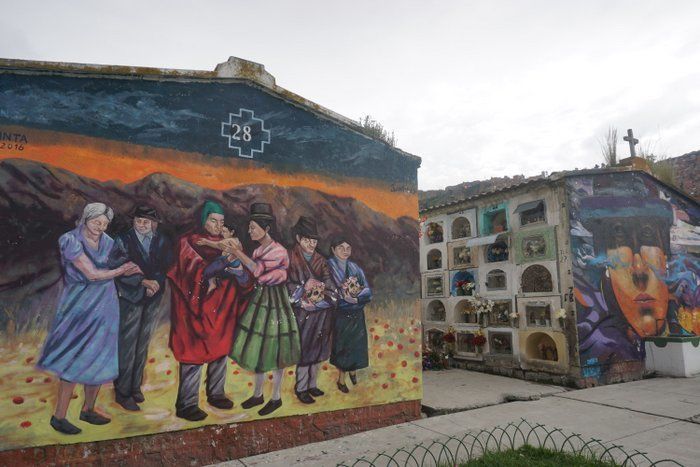
Photo: Sasha Savinov
World-class trekking is abundant in the Bolivian Andes. If you love to hike, all the more reason to visit Bolivia. Bring along a good sleeping bag as temperatures can plummet at night.
La Paz has the best hostels (particularly for partiers) and is a cool city to base yourself in. Lake Titicaca is breathtaking, however, it has become far too touristy – I personally can’t deal with that many people taking selfies. I don’t blame the locals as they need to make a living. Just the way it has been done is unfortunate.
The Salt Flats are also cool AF. Okay, admittedly it’s pretty touristy too, but it’s still worth a visit.
What to Know Before Visiting Bolivia
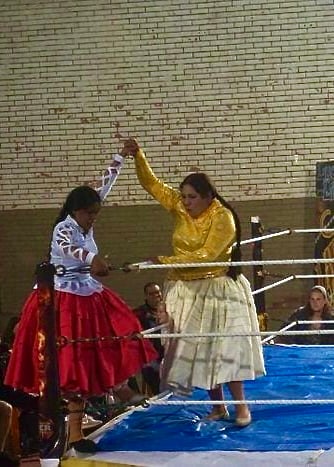
Photo: Sasha Savinov
- Don’t miss out on… the Salar de Uyuni. Yes, everyone who comes to Bolivia does this and, yes, it’s touristy. Regardless, it’s still in-fuckin-credible.
- Keep an eye out for… the altitude. Some people fly directly to La Paz from sea level and get sick almost immediately. At 3640 meters, La Paz is the highest major city in the world.
- The coolest hostel is… Wild Rover La Paz. A dynamic and festive hostel. The perfect place to start your Bolivian experience connecting with other travellers. Great location in the central area.
- The best food is found in… La Paz. This is the epicenter of Bolivia’s newly emerging food culture.
Backpacking Chile
There are no half measures while Backpacking Chile. From trekking through gorgeous glacial national parks to exploring the martian bone-dry Atacama desert , you’re all in for one hell of an experience.

Photo: @Lauramcblonde
There are 36 National Parks in Chile; all of them are beautiful and unique in their own way. Chile is also home to Easter Island, one of the most mysterious places on the planet.
Like Argentina, Chilean Patagonia is a paradise for trekkers and adventure types – though it does take some effort to reach the places you want to go trekking in. That said, the journey is well worth it; experiencing some of the planets last truly wild places is an indescribable feeling that you can only understand by doing it!
Most backpackers will start their backpacking journey in Santiago. But you can come to Chile from one of its borders in the South (as I did).
Oh yeah, one more thing: Chilean wine is cheap and it is damn good! Do you need more reasons?
What to Know Before Visiting Chile

Photo: @Lauramcblonde
- Don’t miss out on… Patagonia, and not just the usual spots. Chilean Patagonia is vastly unexplored, especially the fjords. Look out for whales, dolphins, penguins, and elephant seals.
- Keep an eye out for… fire bans in Torres del Paine. A lot of nature has been threatened because of dickhead backpackers using gas burners, despite warnings.
- The coolest hostel is… MaPatagonia Hostel. Near a beautiful lake, this place has what you need. Kitchen facilities, a nice big garden, some cats, and a jacuzzi! There is also a fireplace for those cold nights.
- The best food is found in… Santiago. Staying in Santiago will unlock the most culinary options, including the cheap street food stalls.
Backpacking Argentina
Viva Argentina!
Backpacking Argentina is one for the ages. Welcome to the land of wine, excessive meat, football, tango, incredibly passionate people, and the final frontier – Patagonia.
Argentina is an immense country with very distinct regions. Eat to your heart’s content, party harder than you ever have before, and fall deeply in love.
You’ll probably land in Buenos Aires, arguably the cultural capital of all of South America.
Unquestionably, you’re going to find incredible hostels in Buenos Aires and reasons to stay. But don’t stay too long!
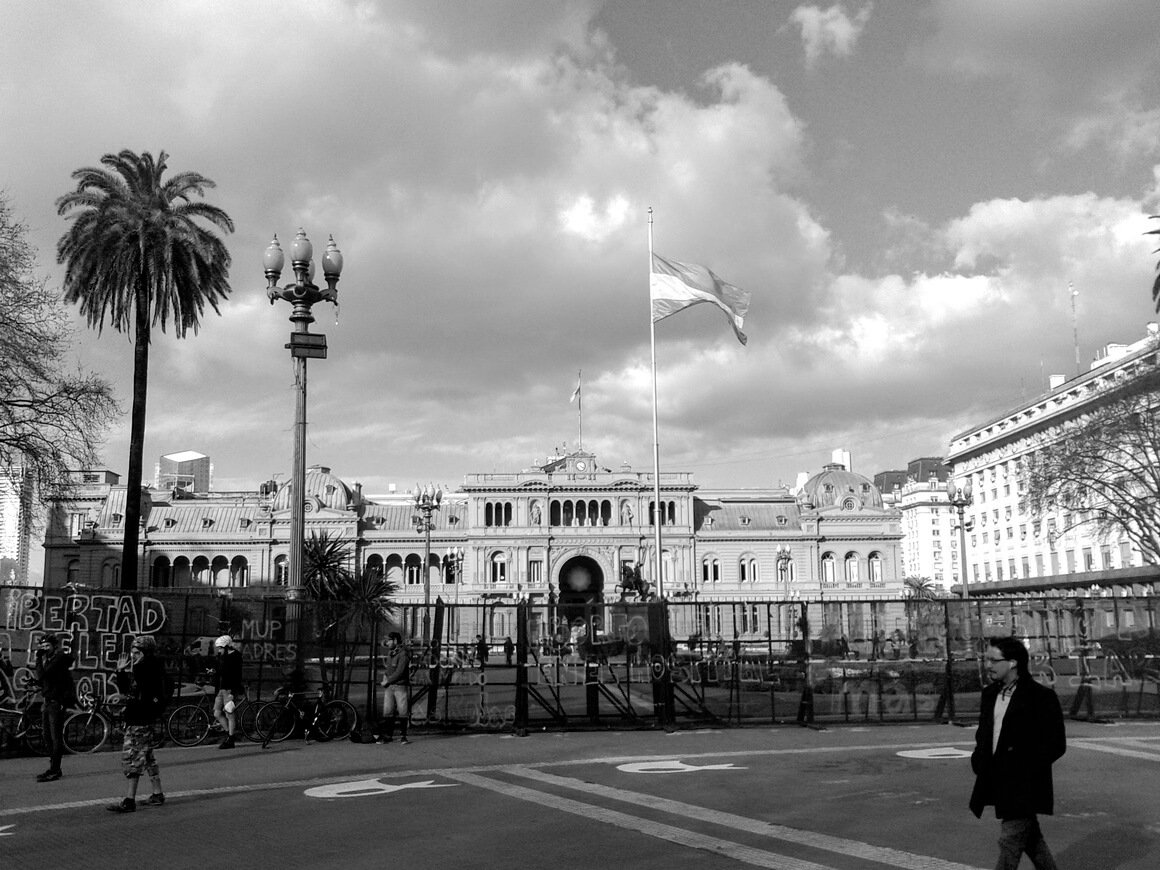
Photo: @Lauramcblonde
Rosario and Cordoba are cities like Buenos Aires but, in my opinion, better. They’re a perfect place to head to if you want to steer clear of the heavily populated capital. Mendoza is the wine region home to the “best wine in the world” (according to Argentinos).
Further south lies Patagonia: one of my favourite places on Earth, and home to many Argentinian National Parks. Patagonia is a truly expansive, desolate wilderness area where the weather is harsh and civilization is few and far between.
Trek mountains and glaciers, or sea kayak around them,. There, you could go days without seeing many (if any) backpackers! Now THAT’S the dream.
Staying at an Argentine mountain hut (refugio) is a wonderful experience not to be missed. Few who travel to Argentina manage to make it as far as Tierra del Fuego (the Land of Fire). Visit one of the most dramatic places in Argentina with its long summer days and epic arctic landscapes.
Speaking of the arctic, you can arrange trips to Antarctica from Ushuaia! This would be the adventure of a lifetime but it’s by no means cheap.
What to Know Before Visiting Argentina

- Don’t miss out on… El Chaltén, which is the base for seeing some of the most dramatic peaks on Earth: Cerro Torre and Fitz Roy.
- You know what’s overrated… La Boca in Buenos Aires. These much-hyped multi-coloured houses are pretty rundown and actually quite dangerous, I strongly suggest you avoid it. The whole area feels like a tourist trap. There are much better things to do in Buenos Aires.
- The coolest hostel is… America del Sur Hostel (El Calafate). Cozy, super social, and with an insane view of the lake, the town, and beautiful sunsets. Great place to chill, and work (if you need to).
- The best food is found in… your neighbour’s personal asado. Nothing beats grilling grade-A Argentinian beef with some locals.
- The official exchange rate is NOT THE EXCHANGE RATE. Because of the fluctating exchange rate, many of the locals withdraw their cash by using what is referred to as a “blue dollar rate” from Western Union. This way gives you 50% more pesos than withdrawing pesos from an ATM or exchanging currency.
Backpacking Uruguay
Not many travellers end up backpacking in Uruguay. There are a few reasons why:
- It’s small
- It’s out of the way
- There’s not a ton to do
All of the above are true to some extent: Uruguay is not overflowing with adventurous activities or jaw-dropping sights. But let me tell you, they have some of the best quality of living in South America.
One of the perks about Uruguay is you don’t HAVE to do anything here. People are friendly and, compared to some chaos you find in other areas of the continent, it’s pretty chill. The beautiful coast is the perfect place to get away from the usual backpacking South America route and to avoid traveller’s burnout.

Photo: @Lauramcblonde
Outside of Montevideo, there are nice beach towns worth crashing at; Punta del Diablo is the quintessential lazy surfer town. Punta del Este is fun in the summer if you like partying. Colonia del Sacramento is an old colonial outpost and UNESCO heritage – although it is admittedly more of a day trip rather than a base.
Oh but here’s the kicker: weed is legalised. Yes, Uruguay is famous for allowing the smoking of the devil’s lettuce. And the quality of it is surprisingly good.
Lots of locals keep a weed garden on their balconies. Perhaps your hostel in Montevideo will have one?
Head to Uruguay if you want to chill out and do your own thing. It’s easy to travel to Brazil and Argentina from there too.
What to Know Before Visiting Uruguay
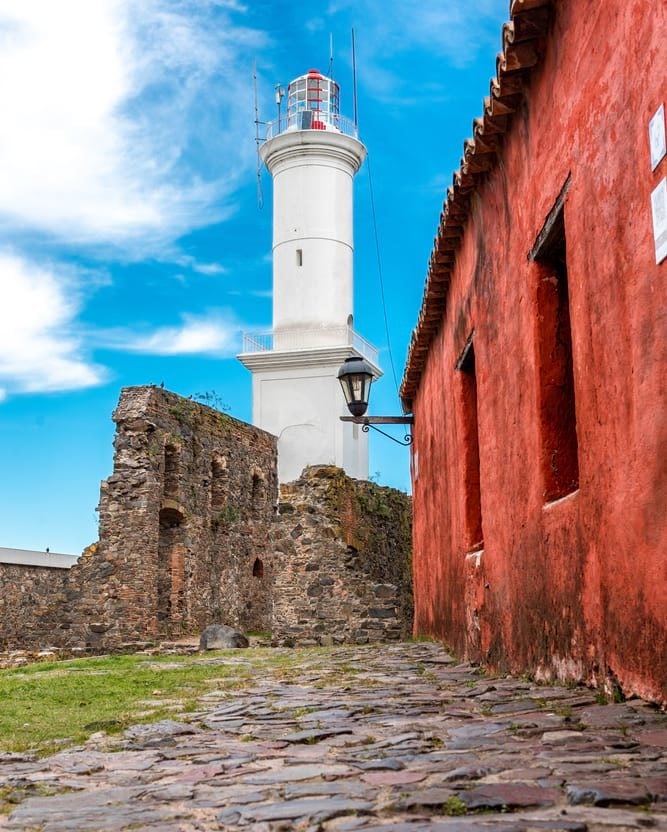
- Don’t miss out on… Punta del Diablo. This is laid-back surfer town evades most backpackers. It is arguably one of the best beach towns in South America.
- You know what’s overrated… Punta del Este. This place literally exists for the sake of Argentinians on holiday. In the off-season, it’s empty.
- The coolest hostel is… La Brújula Hostel. It’s near the beach, eco-friendly, has a family vibe, and is great to meet new people. This is a gem next to the sea.
- The best food is found in… Montevideo. Can’t beat a giant chivito after you’ve got the munchies!
Backpacking Venezuela
Venezuela is a truly incredible country. With towering mountains, steaming forests, endless beaches, and just enough danger to keep you on your toes, this country is every budding adventurer’s dream destination.
A Disclaimer on Visiting Venezuela
Unfortunately, due to the political situation in Venezuela, The Broke Backpacker absolutely does not condone visiting the country right now. It is simply not safe and it would be irresponsible to even attempt to Venezuela at present.
Unless you somehow have absolutely solid and trustworthy contacts on the ground, Venezuela is not the place to travel for the foreseeable future. We do not have any contacts to give out.
That being said, there are many team members at The Broke Backpacker that hold a special place for Venezuela in their hearts. For this reason, we are leaving this information available to you, our readers, as an homage to a country we love. We can’t wait for the day that it will be safe to visit again.
Backpacking Venezuela has a truly terrible reputation. Don’t get me wrong, travelling Venezuela has been dangerous in recent years: this is a country where you need to keep both eyes on your gear, watch who you’re with, and be on the lookout for iffy situations before they get the chance to rear their ugly head.
Backpacking in Venezuela is, in my opinion, one of the last great adventures out there. Plus it’s one of the cheapest countries in the world to backpack in.
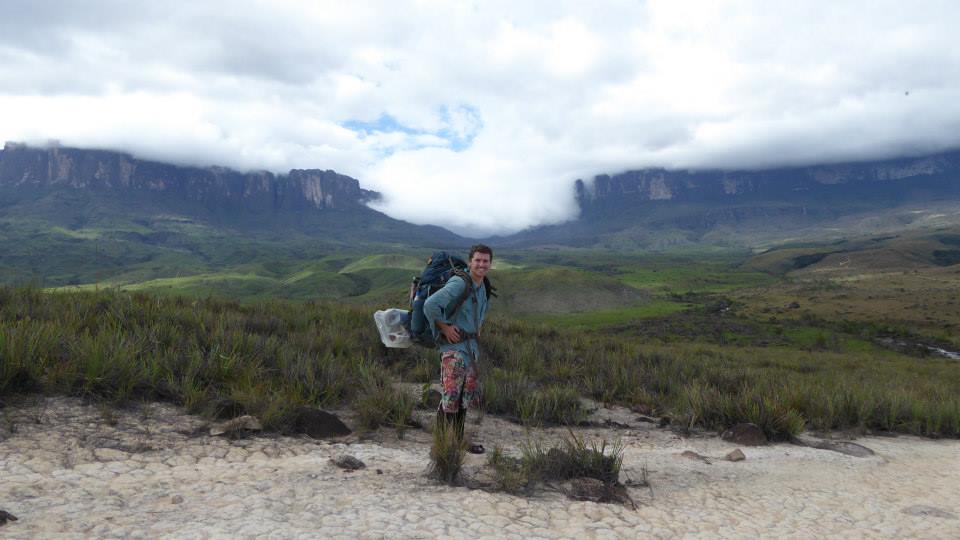
Venezuela is a mysterious country. It attracts adventurers looking for a raw adventure.
It’s a country yet to be polluted by heavy tourism with incredible landscapes of mountains, forests, lakes, and caves. It is a kind of Shangri-La for adventurers and extreme sports lovers.
A South American backpacking trip to Venezuela is getting into the wild. To feel like the old explorers, Venezuela will not disappoint you. But backpacking Venezuela is not for the faint-hearted: this is a veteran explorer country.
What to Know Before Visiting Venezuela
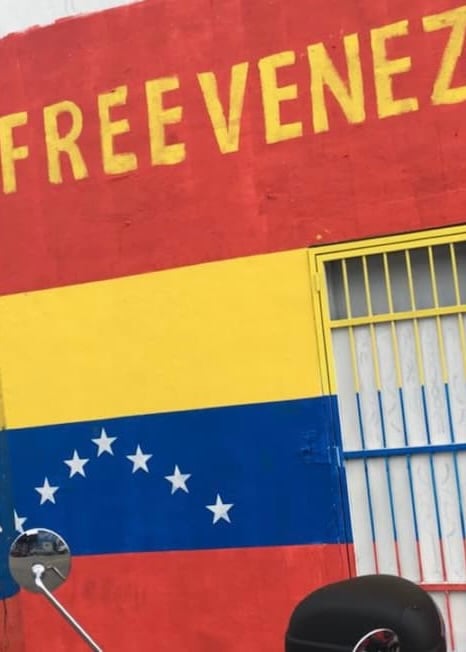
Photo: @amandaadraper
- Don’t miss out on… Mt. Roraima – the highest tabletop mountain in the world; an incredible place to explore. Sometimes you feel like you’re walking on an island in the sky.
- Keep an eye out for… the seasons when visiting Angel Falls. When it’s dry, the falls are actually quite weak (it’s more like a trickle).
- The coolest hostel is… El Sofá Caracas. Safe, quiet, cozy place in the big city. You’ll feel at home instantly. And they have a unique boat pool to chill when it gets too hot.
- The best food is found in… the buffet places where you pay by the weight of your plate. A little goes a long way here and you won’t be disappointed!
Getting Off the Beaten Path in South America
South America is totally full of wild places, tiny villages, far-flung settlements, lonesome valleys, sparsely inhabited jungle… Point being, there are plenty of great places to get off the beaten path. With a little motivation, you may well find yourself cutting your own path and writing your own backpacking destiny, one adventure at a time.
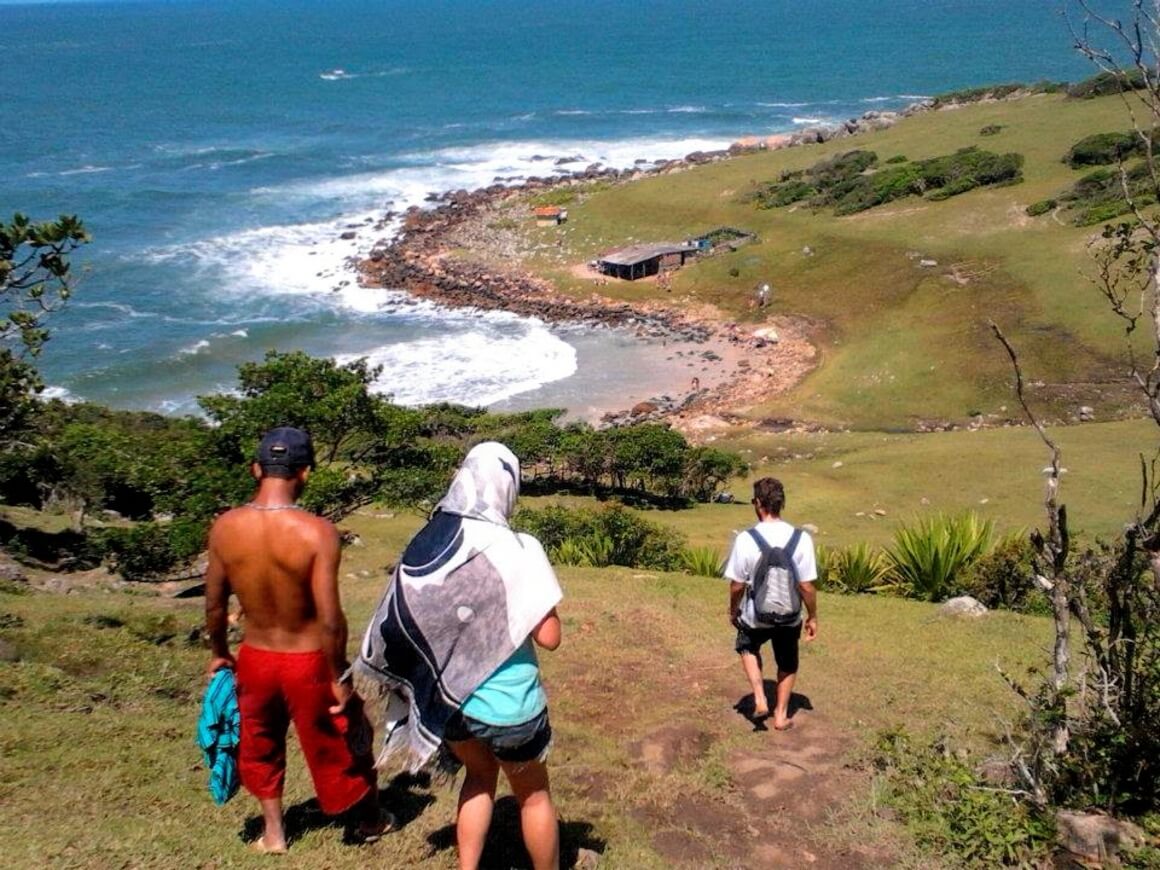
Photo: @sebagvivas
Explore the national park systems of South America as much as you can. Investigate the little interesting-looking food stalls where all the locals are queuing up.
Don’t rely on a guidebook of popular places. In South America, those tiny towns in the middle of nowhere are where the real culture is, and the real adventures. All you need is a bus ticket…

We’ve tested countless backpacks over the years, but there’s one that has always been the best and remains the best buy for adventurers: the broke backpacker-approved Osprey Aether and Ariel series.
Want more deetz on why these packs are so damn perfect? Then read our comprehensive review for the inside scoop!
View on Osprey9 Top Things To Do in South America
You can make your South America backpacking route totally unique. No matter what things you get up to, they’re going to leave a big print on your heart. But here are some things I definitely recommend considering planning for your itinerary.
1. Explore Patagonia
Patagonia is still one of the last untouched wildernesses on the planet. Not everyone gets to experience this in their lifetime! In addition to the usual superlative locations, like Cerro Torre and Torres del Paine, there are heaps to discover off-trail.

2. Check out Medellín
Medellín is one of the most popular cities to visit in South America right now. The choice between Medellín or Bogota has never been easier.
It’s fun, safe, comfortable, and (most impressively) completely different than it was before. Medellín has shed its violent past and is ready to host the next wave of backpackers.

Photo: @Lauramcblonde
3. Explore the Salts Flats of Uyuni
It’s one of the most unique places on the planet and a highlight of any South America backpacking trip. Get ready to be wowed by this alien landscape.
I know broke backpackers usually cringe hard at the idea of an organised tour (because I’m one of them) but the Salt Flats is one that’s really worth shelling out for.

Photo: @Lauramcblonde
4. Catch Some Waves
It wouldn’t be a proper backpacking South America itinerary without some beach time! Every kind of beach imaginable is found on the continent.
From tropical slices in Brazil to surfer’s paradises in Ecuador to even fjords in Chile, you won’t be lacking in choices. Whether you want to spend your days riding waves or relaxing with a cold one in hand, there are plenty of spots for those magical beachy days. Grab a beer, catch some waves, get busy.

5. Visit Machu Picchu
I mean, you’re reading a backpacking South America guide: I know you already know about this one. It is the place that attracts most people to visit South America… but I’d be lying if I said it wasn’t worth visiting.
You can hike the Inca Trail like everyone else. But if you want to visit Machu Picchu in an alternative way, try one of the other Inca trails like Salkantay Trek.
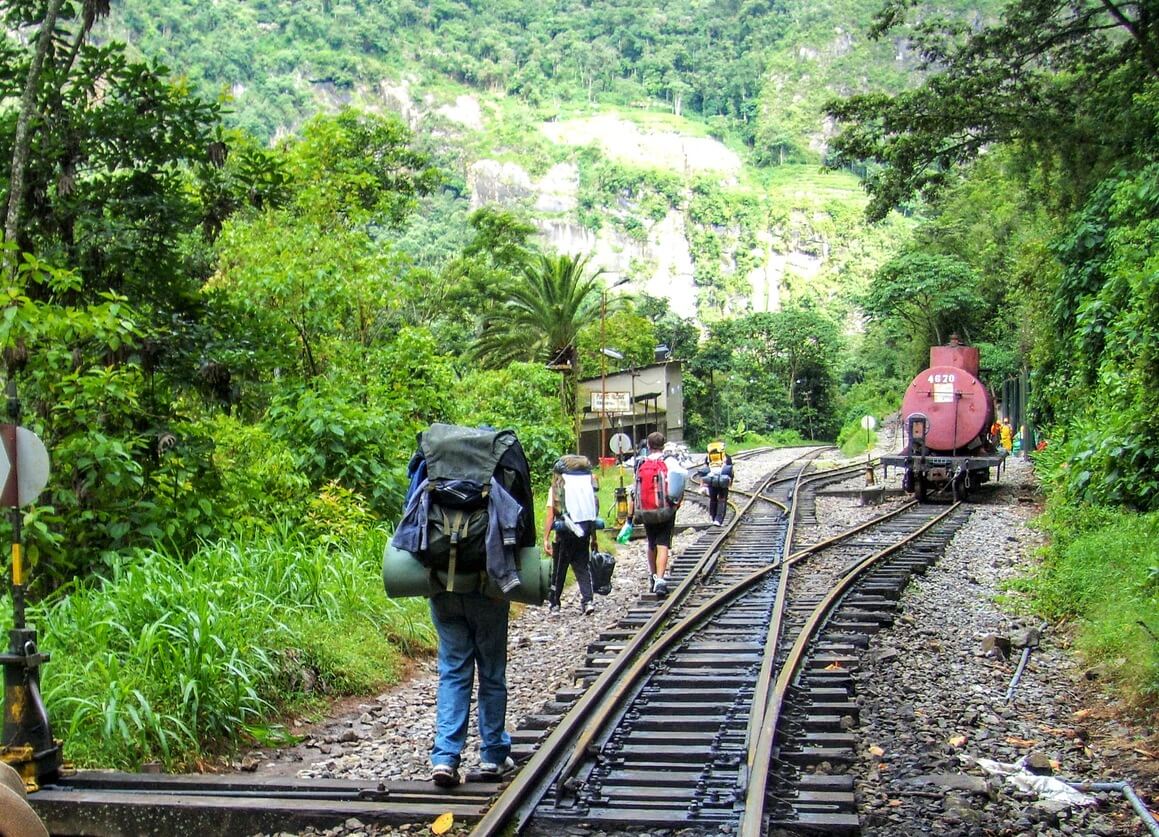
Photo: @Lauramcblonde
6. Hike in the Andes
The Andes are one of the greatest mountain chains in the world, known mostly for hosting the aforementioned Machu Picchu and the gargantuan Aconcagua. But there is more to these mountains than just these popular destinations: the highlands of Ecuador, Cordillera Huayhush in Peru, the Cordillera Real in Bolivia are all stunning. Even Colombia gets a slice of the pie at Cocuy National Park.
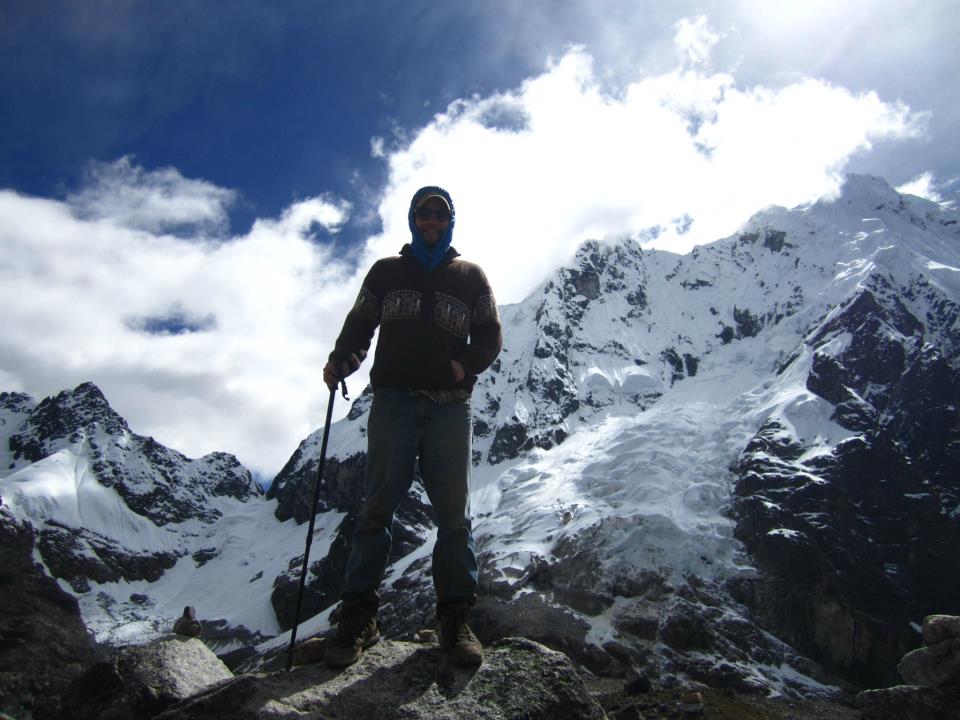
7. Party hard at Carnival
It’s the biggest party on the planet! Grab yo’ body paint, yo’ finest feathers, whatever else you can get your hands on, and join the festivities!
You won’t ever forget the time you spent Carnival in South America. The carnivals in Bahia, Rio, and Barranquilla are particularly good.
8. A South American
Hey, most backpackers will vouch for love and sex on the road being something memorable to take part in…
They love, and they love passionately. And the sex… well, maybe you’ll find out.
9. Get “stuck” somewhere
South America is full of sticky places AKA places where you get stuck for months on end. La Paz, Medellín, Mancora or just another beach bum hostel in Florianópolis… All of these locations start off as a simple stop on your South America backpacking route but turn into temporary homes.
Don’t fight it! Find your sticky place and stay awhile.

Wanna know how to pack like a pro? Well for a start you need the right gear….
These are packing cubes for the globetrotters and compression sacks for the real adventurers – these babies are a traveller’s best kept secret. They organise yo’ packing and minimise volume too so you can pack MORE.
Or, y’know… you can stick to just chucking it all in your backpack…
Get Yours Here Read Our ReviewBackpacker Accommodation in South America
South America has a wide range of budget accommodation options for backpackers. Airbnbs are fantastic for private rooms if you’re travelling as a couple or as a group.
For solo travellers, when you are not passing the night from the comfort of your tent in the Andes or with a Couchsurfing host, you’ll likely be booking hostels.

Photo: @Lauramcblonde
Whether you just need a place to lay your head or a spot to meet fellow backpackers like yourself, hostel life is clearly where it’s at… In fact, I love South American hostels, even travelling with my partner, you get perks in a hostel that you don’t get in a hotel or Airbnb.
I’ve had some of the best nights of my life in them and met some of the best people in my life. The South American countries are home to some of the best hostels in the world.
Insider tip: If you want to see all your hostel options to visitbackp South America, Booking.com is the perfect one-stop-shop to book hostels. You can even filter your personal travel needs to find the perfect place for you.
South America Backpacking Costs
It is the common belief that backpacking in South America is dirt cheap. In some places this is true, but it doesn’t go for the entire continent.
But fear not! Travelling South America on a budget can definitely be done.
Due to the nature of Patagonia being one of the most remote areas on earth, expect higher travel costs than the rest of South America. Peru also takes some navigating in order to travel on a tight budget.
Brazil is one of the most expensive countries in South America. The cost of living in Brazil is higher and it is notorious for jacking up accommodation prices during the high season.

Photo: @Lauramcblonde
With a few travel tips up your sleeve, you will save a ton of money and have the time of your life. Bring your haggle game whilst backpacking through Latin America to ensure you get the best possible price for things, including accommodation. South Americans love smooth talkers so keep it playful but don’t get too cheeky.
Taking long-distance buses, buying beer and drugs, paying entrance fees to national parks… these things add up fast. But sometimes you have to shell out the dough in order to do the things you want. Overnight buses are a good way to save some money.
Remember to always leave a little extra wiggle room in your budget so you can go scuba diving or go on a trek that you have been dreaming about!
Daily Budgets for South America
Here is a breakdown of what you can expect to pay on a daily basis on a backpacking South America trip…
| Country | Dorm Bed | Local Meal | Bus Ride (Depending on Distance) | Average Daily Cost |
|---|---|---|---|---|
| Argentina | $6-15 | $2-10 | $5-50+ | $20 – $70+ |
| Bolivia | $7-10 | $2-5 | $2-5 | $20 – $40 |
| Brazil | $10-15 | $4-9 | $20-50+ | $40 – 50+ |
| Chile | $12-15 | $4-9 | $10-40+ | $35 – $65+ |
| Colombia | $8-10 | $1-12 | $5-30 | $35 – $60 |
| Ecuador | $8-10 | $2-5 | $2-8 | $25 – $50 |
| Peru | $8-15 | $2-8 | $5-45 | $30 – $60 |
Travel Tips for Broke Backpackers in South America
Hey, all those dollaridoodles add up to more fun times. So saving whatever you can on your journey means you can be on the journey… for longer. So here are a few budget travel tips for South America:

Photo: @Lauramcblonde
- Camp: With plenty of untouched beaches, forests, stunning countryside, and far-flung jungle, South America is a great place to carry a good backpacking tent. Camping saves you money and can help you get off of the beaten path.
- Cook your own food: Travel with a portable backpacking stove and cook your own food to save some serious cash whilst backpacking across South America. If you plan to do some overnight hiking trips or camping on the beach, having a backpacking stove will be a great asset.
- Haggle: Haggle as much as you can. You can always get a better price for things, especially while in local markets. Learning Spanish will go a long way!
- Couchsurf: South Americans are awesome. Get to know some! Check out Couchsurfing to make some real friendships and see the real continent. When using Couchsurfing, be sure to send personalized messages to your potential host. A generic copy-and-paste message is much more likely to get turned down. Make yourself stand out.
- Hitchhike: Although some countries are friendlier than others, hitchhiking across South America is common practice, so you won’t struggle too much to find a ride. Speaking at least a little Spanish will go a long way though. You want to explain exactly what you’re doing and where you want to go.
Why Should You Travel to South America with a Water Bottle?
Plastic washes up on even the most pristine places… So do your part and keep the Big Blue beautiful!
You aren’t going to save the world overnight, but together we CAN make a difference. I hope you become more inspired to continue being a responsible traveller.
Plus, now you won’t be buying overpriced bottles of water either! Travel with a filtered water bottle instead and never waste a cent nor a turtle’s life again.

Drink water from ANYWHERE. The Grayl Geopress is the worlds leading filtered water bottle protecting you from all manner of waterborne nasties.
Single-use plastic bottles are a MASSIVE threat to marine life. Be a part of the solution and travel with a filter water bottle. Save money and the environment!
We’ve tested the Geopress rigorously from the icy heights of Pakistan to the tropical jungles of Bali, and can confirm: it’s the best water bottle you’ll ever buy!
View on REI Read the ReviewAnd Speaking of Plastic… Get an eSIM For South America
You know those tiny pieces of plastic you used to use to connect yourself to the internet abroad? Sim Cards I think they were called? Well yeah, we’re ditching those as well.
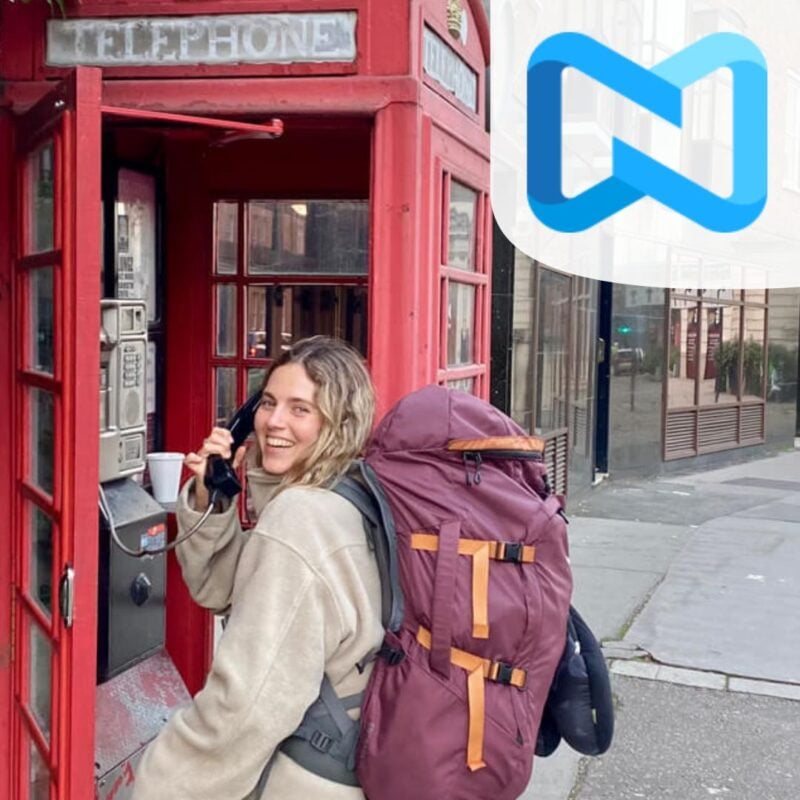
Call your mum, call your job to say you’re quitting or your now ex-boyfriend to say you’re marrying some Sri Lankan dude.
That’s up to you! But get an eSIM — it’s the best way to stay connected when travelling. And Nomad is the best way to find your ideal package 🙂
Get an eSIM with NomadBest Time to Travel to South America
You know by now that we are talking about an enormous amount of land with regards to the South American continent. Countries in South America near the Equator do not experience distinct seasons. As you start to head south you will find the seasons to be the opposite of what they are in the Northern Hemisphere i.e. winter in June.
Patagonia experiences bitterly cold and windy winters. I do not advise travelling there during the winter unless you are a serious mountaineer and have all the right gear.
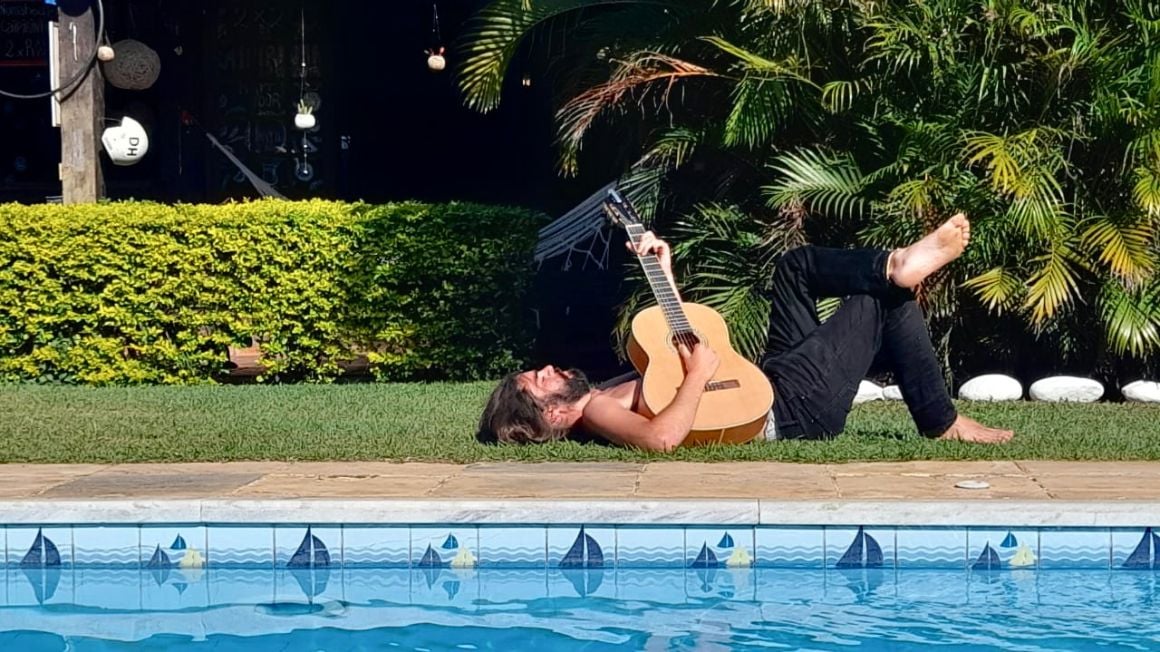
Photo: @monteiro.online
Dry season depends on the country. Generally, the cooler months from June to September are the driest in the coastal areas. In the Amazon – given that it is the world’s biggest rainforest – is wet pretty much all year. The Andes are the driest from April – November.
High season for all countries is, without a doubt, from December – February. This is due to holidays occurring over that time and it is also the time when many gringos and locals alike take their holidays. Backpacking in the low or shoulder seasons will definitely make for a cheaper trip, especially with regards to accommodation.
Best Time to Visit – Country Breakdown
Here are the best times to visit South America broken down by country!
Best Months to Travel: September – April
What’s the climate in Brazil like?
In the south, the hot, wet summer season runs from November – March. In the north, the rainy season is from April – August. In the Amazon, it rains pretty much all year.
If you want to visit during the festival season though, September-March is best.
Best Months to Travel: November – March
What’s the climate in Colombia like?
Generally speaking, travellers should visit Cartagena and the Caribbean coast between November and March when the weather is dry. The rest of the country is good year-round. Bogota, Cali, and Medellin are always pleasant weather-wise.
Best Months to Travel: March – May, September – November
What’s the climate in Ecuador and Peru like?
Lots and lots of micro-climates in the Ecuador Peru region. But there are some general trends:
- The highlands/Andes are dry from May – September. These are the best months for hiking and visiting Machu Picchu.
- The coast is warm and dry from December – May. This is the best time for the Galápagos.
- The Amazon is always wet and humid as shit.
- The south of Peru is much drier than the north, and Ecuador for that matter.
You’ll need to plan your trip carefully around what you want to see and do.
Best Months to Travel: May – October
What’s the climate in Bolivia like?
The winter season (May – October) is also its dry season, and the best time to visit Bolivia. This means that nights can be very cold, especially when you’re at higher altitudes. Although Bolivia is generally drier than its neighbours, it stills gets dumped on in the wet, summer season.
Best Months to Travel: March – April, October – November
What’s the climate in Chile like?
Summers in Chile are generally the high season. That being said, this may not be the best time to visit. Prices are at their highest, the Atacama Desert is a furnace, and the winds are VERY strong in Patagonia.
Like almost anywhere, the shoulder months (October – November & March – April) are better.
Best Months to Travel: October – April.
What’s the climate in Argentina and Uruguay like?
Summer for most of the country is from December – February. In the north, the summers can see rain and temperatures that soar to almost unbearable. In the south and Patagonia, summers are dry(ish) and pleasant.
The winters, obviously, are extremely cold in the south. Whereas the north generally has pretty mild winters.
What to Pack for South America
Travelling through South America is a lot easier if you have the right gear. A thorough backpacking South America packing list goes a long way – literally.
On every adventure, there are 6 things I never go travelling without:
Ear Plugs
Snoring dorm-mates can ruin your nights rest and seriously damage the hostel experience. This is why I always travel with a pack of decent ear plugs.
Hanging Laundry Bag
Trust us, this is an absolute game changer. Super compact, a hanging mesh laundry bag stops your dirty clothes from stinking, you don’t know how much you need one of these… so just get it, thank us later.
Sea To Summit Micro Towel
Hostel towels are scummy and take forever to dry. Microfibre towels dry quickly, are compact, lightweight, and can be used as a blanket or yoga mat if need be.
Monopoly Deal
Forget about Poker! Monopoly Deal is the single best travel card game that we have ever played. Works with 2-5 players and guarantees happy days.
Grayl Geopress Water Bottle
Always travel with a water bottle! They save you money and reduce your plastic footprint on our planet. The Grayl Geopress acts as a purifier AND temperature regulator. Boom!
Staying Safe in South America
South America IS a safe place to go backpacking. Is backpacking in South America safe all the time?
Hell no. But nowhere in the world is safe 100% of the time. Does that mean we let it stop us?
Hell no.
In recent years, security in South America is increasing. Using the common sense safety rules of backpacking is usually enough here.
The thing with South America is understanding your surroundings and self-awareness. Coordinating your safety in Rio de Janeiro is completely different than hiking the Inca Trail.
Robberies are rare and could happen to anyone – in any country. Sometimes people in desperate circumstances are forced to do bad things. They see a foreigner and they see a chance to temporarily relieve the stress of their situation.
Odds are, you should be just fine. If ever you run into a hold-up situation just give them what they want.
Your iPhone and wallet aren’t worth dying over, ever! But it’s worth hiding your money well just in case.
Political wobbles are pretty common. Due to the political situation in Venezuela right now, this is probably the most dangerous country in Latin America. I hate to say it but the situation is what it is.
In general, being out late, drunk, and/or alone is a recipe for trouble. Always take a taxi home at night, even in a group.
Do know which neighbourhoods you should avoid too, especially in major cities – even during the daytime. Ask the locals which these are. There’s no real reason to head into these areas anyway, but it’s worth noting so you don’t stumble into the wrong places.
Sex, Drugs, and Rock n’ Roll in South America
South Americans love to party! They start the party late and they don’t stop until the sun is way up.
Of course, Brazil is very famous for Carnival AKA the biggest party on the planet. But it’s a big deal in most South American countries – so you’ll find great parties everywhere.
The backpacker circuit is notoriously rowdy. Traveller hubs like Cusco, Buenos Aires, Montañita, Mancora, La Paz, and Medellín are legendary for their nightlife.
It is very easy to meet people, stay up all night, and fall in love with a sexy South American. Much of the continent is LGBTQ+ traveller friendly too!

Photo: @Lauramcblonde
Alcohol is freely available, freely consumed, and good quality too. I’m telling you, I’ve had beer in South America which puts Germany to shame.
South America is stoner-friendly too! Weed is legal or decriminalized for recreational use in many places – some countries are more relaxed than others. It’s best to ask the locals how it’s currently being handled where you are.
Cocaine is just about everywhere; particularly in Colombia, Peru, and Bolivia. But be aware, this isn’t the stuff you find back home – it’s much purer. One line is enough to keep you up all night.
To find drugs on the road, just ask a local to help you. Don’t go out alone looking to score in strange places and don’t give cops a reason to shake you down.
Ayahuasca retreats are gaining popularity as well. But remember, it is a ceremonial spiritual medicine of indigenous people. If you do want to try it, make sure you’re doing it with a real shaman, for real reasons; it’s not like acid and not a drug just to get mindless with.
Staying Healthy in South America
Travellers should be properly vaccinated before backpacking in South America. Consult a medical professional before travelling about which shots you should get.
You should have all the usual travel vaccinations before heading out: hepatitis A & B, typhoid, tetanus, etc. Rabies is also recommended particularly if you’re going to the rural areas or parts of the jungle. You don’t want to mess around with that one because it can be really nasty.

Photo: @Lauramcblonde
It is worth checking if you need the Yellow fever vaccine before entering some countries. In some places, it is only recommended.
It’s also worth noting that in most places in South America, the water isn’t fit for consumption. The best travel water bottles have a filter.
Getting Insured BEFORE Visiting South America
ALWAYS sort out your backpacker insurance before your trip. There’s plenty to choose from in that department, but a good place to start is Safety Wing. Travelling without insurance in South America is risky. I broke my back in Brazil and will be happy to tell you why GOOD travel insurance is so important.
They offer month-to-month payments, no lock-in contracts, and require absolutely no itineraries: that’s the exact kind of insurance long-term travellers and digital nomads need.
SafetyWing is cheap, easy, and admin-free: just sign up lickety-split so you can get back to it!
Click the button below to learn more about SafetyWing’s setup or read our insider review for the full tasty scoop.
Getting Into South America
Where you will start your trip will be determined by what backpacking route you have chosen. Obviously, if you plan to tackle a specific country, the capital city of that country is a popular starting point and – usually – the logical option.
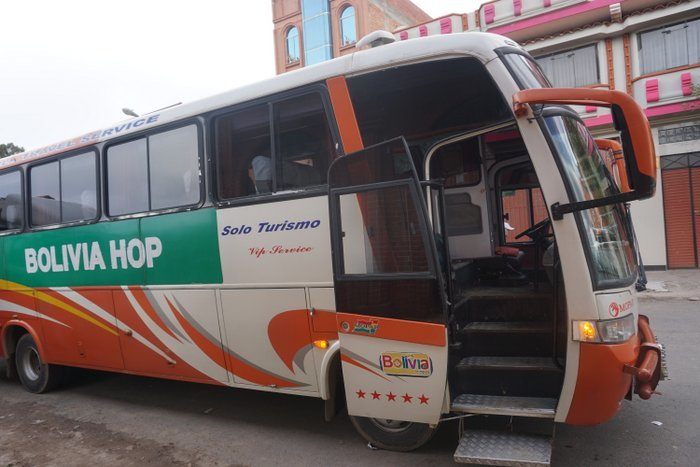
Photo: Sasha Savinov
South America is not the cheapest country to fly to, but you can sometimes bag a cheap direct flight from another major airport. It’s pretty expensive to fly within it too. Unless you are coming by boat to Colombia via the San Blas Islands, you will certainly be arriving by plane.
São Paulo, Lima, Buenos Aires, Santiago, and Rio de Janeiro are all major hubs for South America. Compare the prices between these top destinations, and base your South America itinerary from there.
Entry Requirements for South America
Good news everyone! Most South American nations DO NOT require a visa to visit! This applies to those travelling from the USA, UK, EU, Australia, and most other Western nations.
This is a positive trend in the last few years. A few years ago, travellers sometimes had to apply for (expensive) visas to enter countries like Argentina and Brazil. Luckily, this is no longer the case.
Once you’ve entered the country, you can remain for a period of 90 days visa-free. Extensions are possible but these vary on a country-by-country basis. Most South American governments do not take kindly to people who overstay.
Of course, ALWAYS double-check visa policies before travelling.
How to Get Around South America
City Bus. Local Bus. Long-distance bus. Overnight bus.
Buses!
That’s right. Buses are the most economical way of getting around South America. Every major capital has buses going to the far reaches of the country.
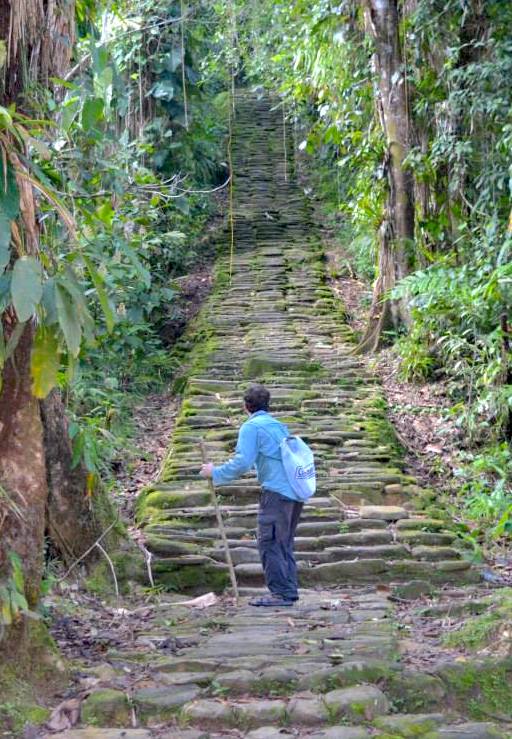
Photo: Will Hatton
Local buses are typically super cheap. You can book online but the bus stations are organised really well too.
Taxis are an option within cities and sometimes Uber too, depending on the city. If you opt for a taxi ride, make sure they are legit, set the price beforehand, and haggle the shit out of the driver without being rude.
Flights between countries in South America can be expensive. Internal flights within the country aren’t the cheapest either, though they are cheaper if you buy them while you’re inside the country (you’ll save money on taxes).
As a general rule when backpacking, cheap travel is slow travel. Buses can be slow but as you will be taking many if you are backpacking South America long term, you want to go for the cheapest option.
If you want to go full Che Guevara style you can travel by motorbike pretty easily (and cheaply) in most places in South America. I recommend that you have some experience riding motorbikes before you even think about sauntering into a capital city or down a winding road in the Andes. If you do go the motorcycle route you can be sure that it will be the ride of your life.
Hitchhiking in South America
Travelling by hitchhiking is always an option. Your success will greatly depend on the area and the country; I wouldn’t recommend hitchhiking in a major city or at night.
Hitchhikers aren’t that common in countries like Colombia, mainly due to paranoia about the security situation in the country. Not everyone here is a drug lord that wants to kidnap you for ransom money. You can hitchhike throughout Colombia AND it’s such an awesome experience!
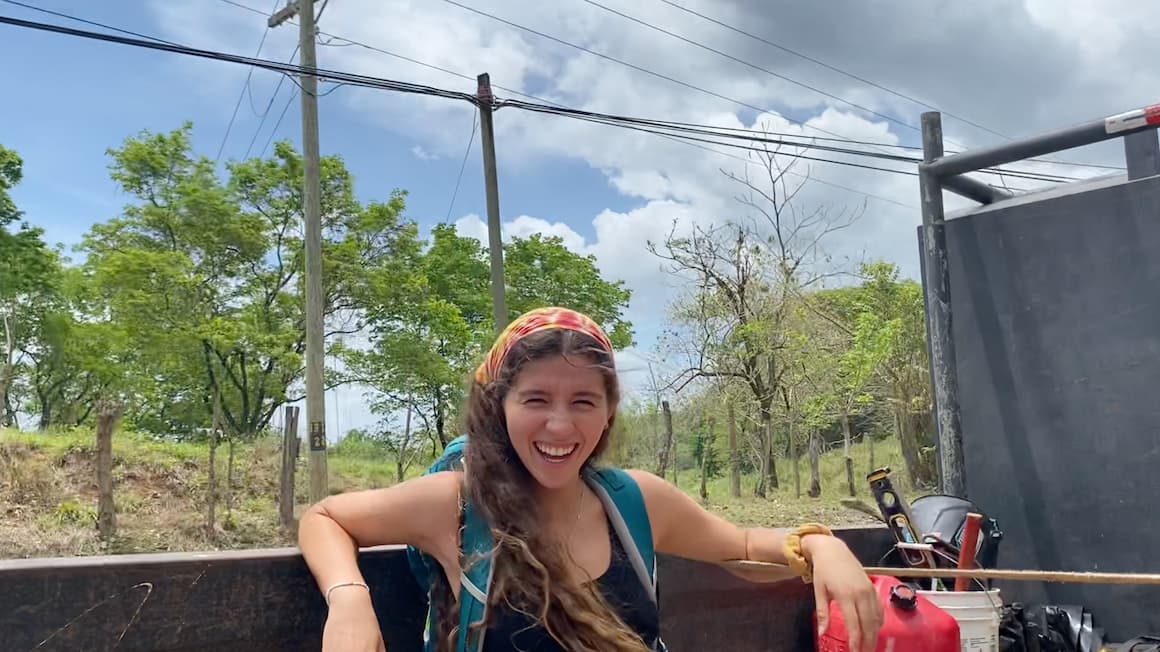
Photo: @amandaadraper
Rural areas of South America are especially impacted by high rates of poverty. Expecting free rides from folks with limited means isn’t morally fantastic. That said, even if you offer the driver a few bucks, it could very well end up being cheaper (and more rewarding) than taking the bus.
I would never assume that the ride is free initially. Always ask to avoid having an awkward scenario in which the driver who picked you up is demanding an unexpected fee. This is when learning Spanish comes in very handy.
Onwards Travel From South America
Your only options for leaving the continent are by boat or by plane. Most likely you will fly out of the country where you are finishing your trip if it makes sense and is the cheapest option. Try to book your flights in advance in order to find the best flight deals.
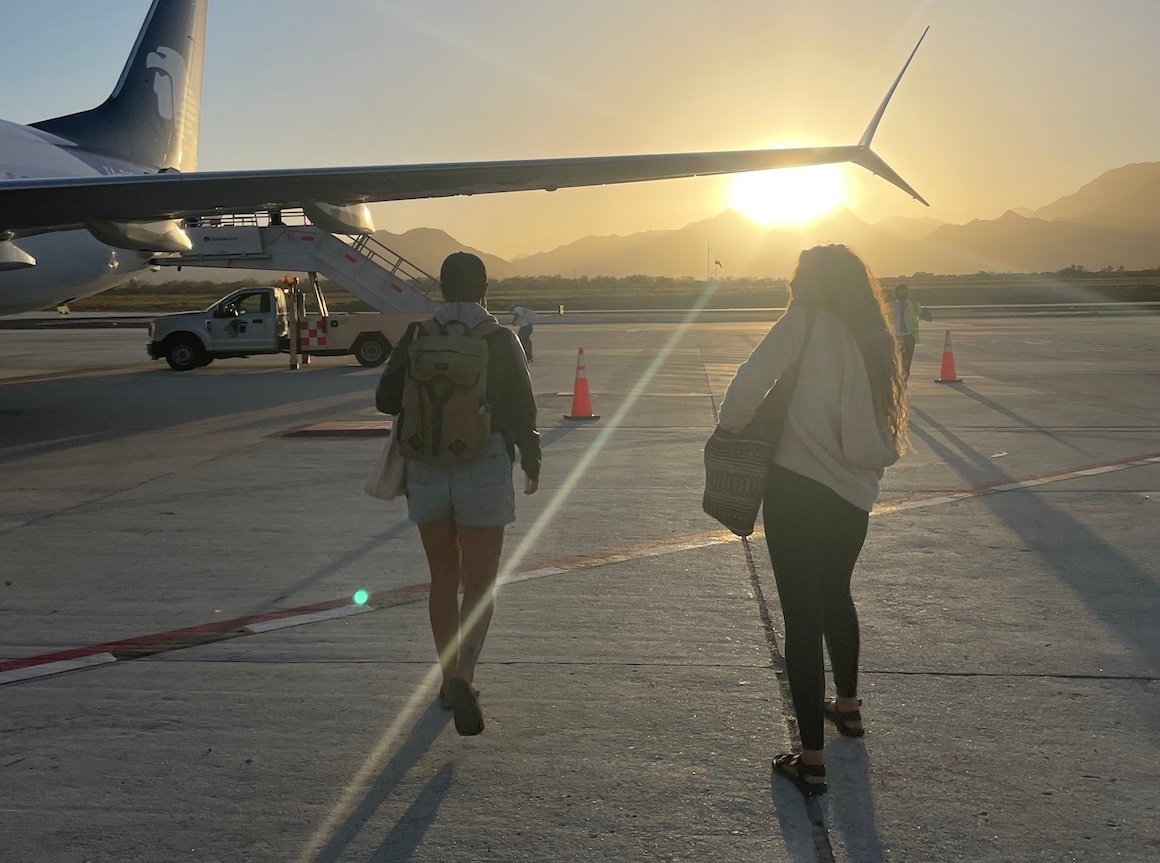
Photo: @audyscala
It is technically possible to cross the Darien Gap to Panama overland. Rumour has it that you can hire a guide for quite a bit of money and cross the Darien on foot.
In the past, this was impossible though due to narco-terrorist/guerrilla activity. May the Gods of Backpacking be with you if you attempt the journey on your own without a guide.
Working in South America
South America is becoming a digital nomad hub. After the pandemic, the boom really: a generally low cost of living, relatively reliable internet, and tons of expat communities.
Medellín is the current front-runner. This city is growing at a RAPID pace and is becoming the apple in every backpacker’s eye.
Plus, Medellín is safer than ever. Lots of people want to stay here for an extended period of time, digital nomads included.

Photo: @Lauramcblonde
Close behind are larger South American cities like Buenos Aires, São Paulo, and Quito. Being big cities though, you’ll have to overcome higher prices and crime. Safety in Buenos Aires can be sketchy but so can every massive city, right?
Note that, at the moment, most South American countries do not offer a special digital nomad visa.

A new country, a new contract, a new piece of plastic – booooring. Instead, buy an eSIM!
Jetpac eSIMs work just like an app: you download it, pick your plan, and BOOM! You’re connected the minute you land. It’s that easy.
Read about how e-Sims work or click below to see one of the top eSIM providers on the market and ditch the plastic.
Grab an eSIM!Teaching English in South America
Most people who end up living or staying long-term in South America do one of two things: teach English or volunteer.
Teaching English in South America is very popular. Some people make a living out of just going from one city to the next city and hitting up all the English schools in between. Some are accredited though many find success using their own merits.
If you have a TEFL certificate it will be much easier to score teaching gigs in South America. I recommend getting yours with MyTEFL – Broke Backpacker readers get a 50% discount on TEFL courses when you enter the code PACK50 at the checkout.
Volunteering in South America
Volunteering abroad is a great way to experience a culture whilst doing some good. There are loads of volunteering gigs in South America ranging from protecting the Amazon to teaching in barrios of Buenos Aires.
Arguably, you may need a permit in order to volunteer. But in reality, the continent is pretty chill and this is unlikely to ever be enforced.
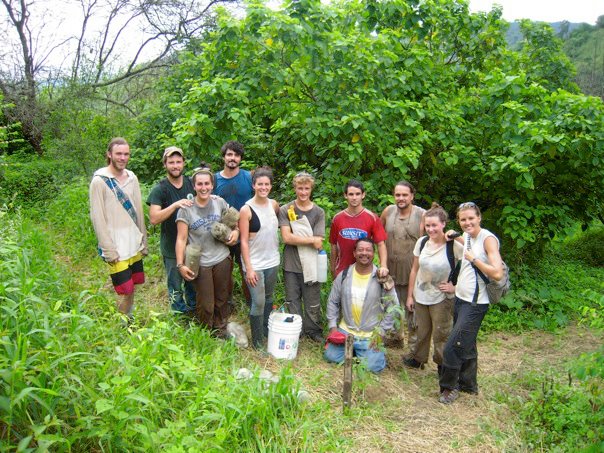
I spent a few weeks volunteering in the mountains in Northern Colombia and it was the best way to get to know the land, people, and lifestyle. Finding volunteering opportunities in South America is about learning, building community, and making an impact in a place you visit.
The best way to find volunteer jobs is word of a trustworthy mouth. But programs run through reputable work exchange programs like Worldpackers, Workaway, and WWOOF help you get your foot in the door of volunteer communities.
They’re a great opportunity for unique experiences and make amazing connections with people. But you do have to stay vigilant, especially when working with animals or children.
If you sign up for Worldpackers with a discount code, memberships are only $39 a year. For that price, it’s often worth giving it a try.
What to Eat in South America
Summing up food in South America is like trying to explain what music is. It’s incredibly diverse and every country, every region, every household has a different definition.
First of all, meat is hard to avoid. They like it juicy, tender, slow-cooked, and accompanying pretty much everything. Especially in the southern part of the continent, Argentina, Uruguay, and South Brazil, the smell of cooking cow is heavy in the air.
The Argentinian way of grilling is Asado. And it’s not just a delicious barbecue – oh no – that’s just the centrepiece. The event is a huge part of the culture.
The vegetarian movement is gaining momentum, though it’s harder in some places than others. In more rural places, you may go hungry if you don’t want to eat meat now and again, but in general, it’s not impossible.

Photo: @Lauramcblonde
Andean countries like Peru and Bolivia have chronically underrated food scenes. In fact, Peruvian food is often regarded as some of the best in the world. You’ve never felt fresher than after chowing down that ceviche.
In the Amazon, they have a whole different gastronomic world; obviously, everything grows here. There are ingredients that come from the Amazon that just don’t exist anywhere else.
There are strange fruit and vegetables in abundance. Then, of course, the fresh fish comes leaping out of the river, almost directly to your plate. Catching your own fish is never a bad idea either.
The food in the north of South America, like Colombia and Venezuela, is the definition of comfort food. If you’re eating right, you’re going to be gaining a few kilos. Don’t pass on an opportunity to gorge yourself silly.
Street food usually involves lots of deep-fried goodness. But it’s the abuelas that make the best pastries, with oodles of love. And ooh, those arepas… they have a special place on my plate.
The Best Food in South America
Here are some of the best South American foods that you definitely shouldn’t miss out on.
- Feijão (Brazil) – Beany stew for everyday eating.
- Acai (Brazil) – Superfood berry.
- Empanadas – Your trusty stuffed pastry friend.
- Dulce de leche – Just try it… thank me later.
- Asado (Argentina) – Grilled meat with a side of meat.
- Antichucho (Bolivia) – Mmmm… cow’s heart.
- Ceviche (Peru/Chile) – raw but not raw fish, in lemon juice.
- Cuy (Peru) – A large cooked guinea pig.
- Encebollado (Ecuador) – Ecuadorian Grandma’s comfort stew.
- Arepas (Colombia) – Corn pockets to fill your hungry belly.
South American Culture
South America is a very complex continent. Colonization by Western Europeans technically makes it the youngest member of modern civilization. But saying this disregards all the history that came before the “conquistadors” arrived.
South America has hosted many advanced civilizations like the Incan Empire, whose influence still lasts to this day. Though much of the native culture was lost with the mass killing by said conquistadors.
Long story short: South America is an enormously diverse region, maybe more so than anywhere else. Yes, European culture has largely shaped the entire continent. But indigenous and African cultures are just as important, if not more so.
Northern Brazil is very Afrocentric. This was the first charted part of the continent and ideal for rowing sugarcane. Consequently, it’s the place where all the slaves were brought.
Slavery is over. But it leaves behind a blend of African customs and cultures morphed into Latino culture.
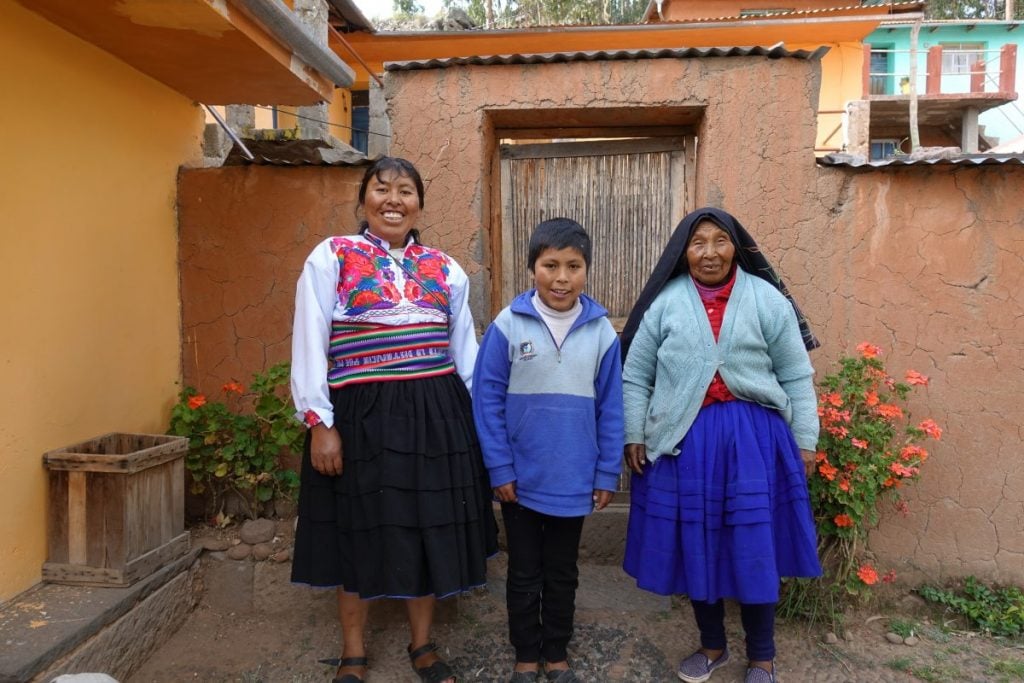
Photo: Ankita Kumar
The south, which constitutes Argentina, Chile, and Southern Brazil, is much more European. Aside from the big players – the Spanish and Portuguese – Italians, Germans, and French all settled here following a huge era of migration.
In the Andean countries of Bolivia, Peru, and Ecuador you see a lot of indigenous cultures. Some people still live like their ancestors, living in the highlands and tending the land. Though Spanish is still the dominant language, several local languages, like Quecha and Aymara, are still commonly spoken.
Don’t make the mistake of thinking that all of South America is just an extension of Europe or North America. You’ll miss out on the beautiful subtleties of the region, which make backpacking in South America so wonderful.
Unique Experiences in South America
A backpacking trip in South America is a unique experience in itself. And within that, there are instance amounts of opportunities to make your South America itinerary different to anyone else who’s travelled here before. Here are some of the best things to add to it:

Things go wrong on the road ALL THE TIME. Be prepared for what life throws at you.
Buy an AMK Travel Medical Kit before you head out on your next adventure – don’t be daft!
Buy on REIHiking in South America
South America has some of the best hikes in the world. Here are a few iconic options to get your bucket list started:
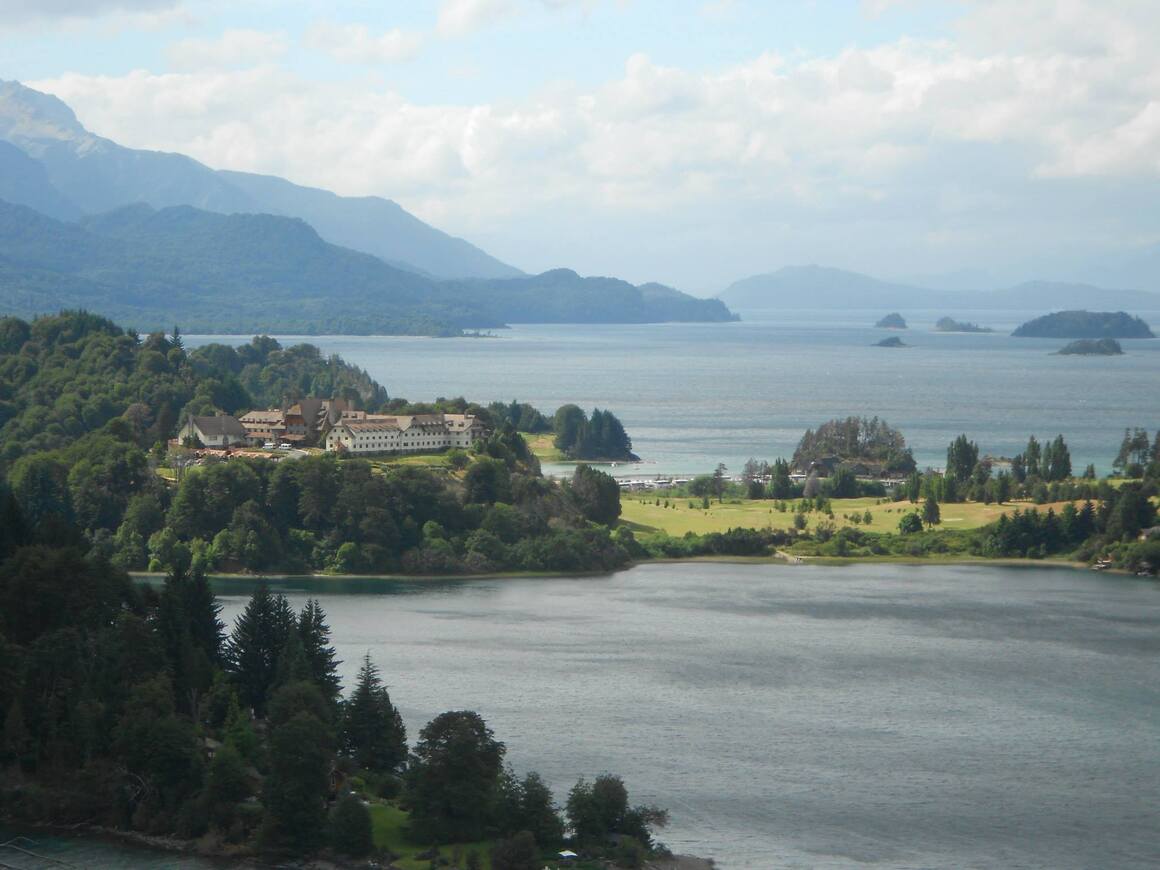
Photo: @Lauramcblonde
- Lost City Hike, Colombia: This hike through the Colombian jungle will certainly be a highlight of your South America travel.
- Sierra Nevada de Cocuy, Colombia: Snow in Colombia? Here you can find peaks are as high as 5,330 meters above sea level. If you have your own gear and a good sleeping bag, you can probably do the hike without a guide.
- Iliniza-Norte, Ecuador. This is a fantastic 2-day trek that does not require any special gear or equipment. If you are planning to tackle Cotopaxi this is a great warm-up. A solid challenge for the dedicated hiker!
- The Salkantay trek, Peru: Hike to Machu Picchu over 4 days and experience the true beauty of the Andes along the way. One of my favorite South American treks for sure.
- The Cordillera Huayhuash, Peru: Truly one of the most stunning areas in Peru. For serious hikers, planning a trek like this is one for the books!
- Hut-to-Hut in Bariloche, Argentina: Spectacular hike for some of the best views of Nahuel Huapi National Park and its lakes. Tents are optional since you can stay exclusively in the refugios.
- Villa O’Higgins to El Chaltén, Chile/Argentina: One of the greatest ways to experience Patagonia. Walk from Villa O’Higgins in Chile to El Chaltén in Argentina. You’ll see some superlative mountain, forest, and lake scenery along the way.
- Torres Del Paine Circuit, Chile: The hike of all hikes in South America. This epic walk takes 9 – 11 days and passes through some of the most dramatic landscapes one can fathom. A must if you’ve got the time and hiking spirit!
Scuba Diving in South America
You have scuba diving options galore in South America! In general, scuba diving is pricier than it is in other parts of the world but that’s because it’s worth it. If it is something that you really want to do, I say go for it!
Colombia is probably the cheapest and best place to dive AND get certified in South America. You have Providencia and Santa Catalina (a smaller island to the north) which is home to the third-largest coral reef barrier on Earth and includes over 40 dive sites.

Image: Nic Hilditch-Short.
Malpelo is the harder-to-reach version: a jagged rock in the Colombian Pacific, it can only be reached by boat, and divers can only visit here as part of an organized trip. It’s worth the time and money for sure; Malpelo is one of the best places in the world to dive with sharks, including hammerheads, whale, and the rare sun ray shark.
People have reported schools of up to 500 sharks around Malpelo. That’s right. 500!
Peru and Ecuador both have some decent diving right off their coasts. The diving around the Galápagos Islands is world-class, but it will cost you a fortune go diving there. The hostels in Galapagos are pretty reasonably priced though – check out my guide!
If you truly want to have the scuba diving adventure of a lifetime, I highly recommend joining a Liveaboard trip.
Surfing in South America
Surfing is the number one sport on South America’s coast. From Peru to Brazil, backpackers and locals are coming together and shredding!
Peru is home to the longest left-breaking wave in the world. You can literally ride a wave for five minutes!

Image: Nic Hilditch-Short
The Pacific Coast is dotted with funky surf towns, where the main activities revolve around the waves and the nightlife. There are a plethora of surf schools in every country. Often these surf schools offer Spanish classes as well if you are wanting to double down (which I highly suggest!).
It is easy to fall in love with the surfing lifestyle. But be careful, you might just fall in love with the whole scene. I wouldn’t blame you for a second.

Our GREATEST Travel Secrets…
Pop your email here & get the original Broke Backpacker Bible for FREE.
FAQs About Backpacking in South America
Here are the questions I get asked the most about how to backpack South America.
Final Thoughts on Backpacking South America
Backpacking South America can be one hell of a party at times. Take it from me, it can be easy to get carried away.
You can make a positive impact on people when we travel and South America is the perfect place to do that. Try to spend your money in places where the experience is mutually rewarding.
When buying a local craft, be fair to the person who spent countless hours crafting it. Pay people their worth and contribute to the local economies as much as possible.
If you visit small or indigenous communities, be respectful: they are normal folks just living their lives. Backpacking South America – or any region for that matter – often illuminates some of the great socio-economic inequalities of the world. Never take it for granted that you are healthy and financially able to go travelling.
Show the world around you some gratitude and help to make a positive impact on it. Most of all have the time of your life and spread the love!
Well, amigos, the time has come for me to send you on your travellin’ way. Armed with your budget travel knowledge, on you go!
Your South America backpacking trip awaits. Have a few cold ones for me, yeah?
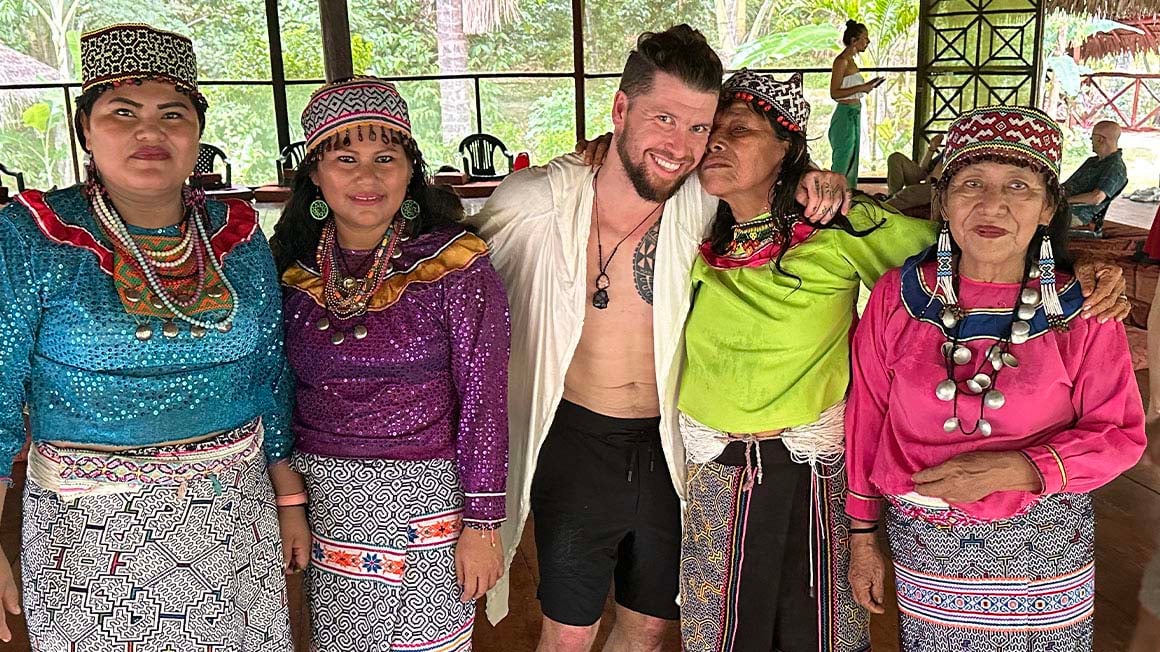
Buy Us a Coffee!
A couple of you lovely readers suggested we set up a tip jar for direct support as an alternative to booking through our links, since we’ve decided to keep the site ad-free. So here it is!
You can now buy The Broke Backpacker a coffee. If you like and use our content to plan your trips, it’s a much appreciated way to show appreciation 🙂


